Archived Fire Damage Blog Posts
It’s Not Just the Flames that Do the Damage to Your Highland Home
8/4/2022 (Permalink)
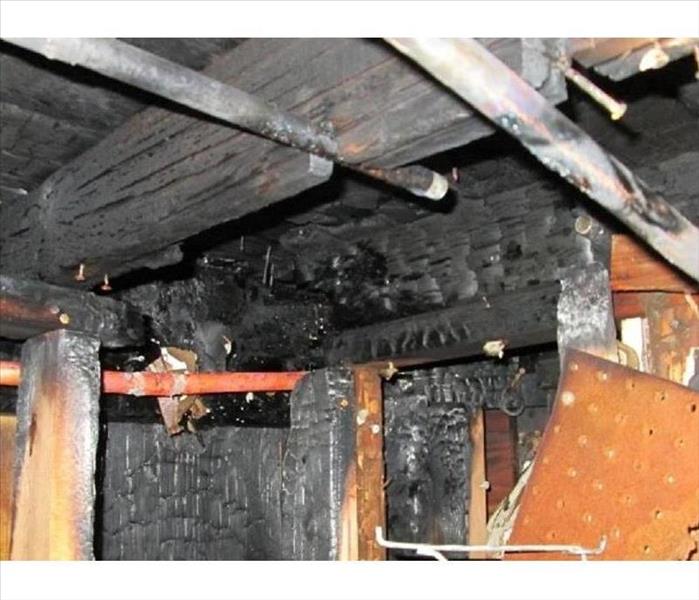 Soot and water damage do just as much damage as the fire itself. Call the experienced pros to handle it all if you're dealing with a fire!
Soot and water damage do just as much damage as the fire itself. Call the experienced pros to handle it all if you're dealing with a fire!
Whether it’s at your Highland home or your Saugerties business, a fire is a devastating occurrence. Once the flames are out, the next steps are often confusing at to who to call, what the cleanup truly entails and what kind of damage has really been done.
Horrible flames are what most of us think of, but the fire itself isn’t always what causes the most damage. Smoke, soot and water damage go together with a fire, no matter the type, and it’s vital to work with a trusted and reliable restoration company that understands how to handle all these issues, work with your insurance company and get you back to preloss condition as soon as possible.
The Types of Damage That Fires Can Cause
Smoke Damage Smoke inhalation is the #1 cause of fire-related deaths, and smoke damage is also one of the most severe ways a structure can be impacted after a fire. Smoke seeps into absolutely everything, damaging furniture, walls, flooring, even the furthest rooms. For areas not physically touched by the flames, paint discoloration, corroded appliances and unbearable odors can all be expected following simply due to the smoke.
Soot Damage- Soot is an inescapable, nasty substance that WILL cover nearly anything in a layer of extremely hazardous film. Soot is the deposit that smoke leaves behind, which often contains many chemicals as a result of the burning of plastics and other combustibles. Not only can soot linger on items, but it can also infiltrate the ducts of the HVAC system in a home or business leading to contaminated air quality. Hiring an experienced restoration company that can also clean out your HVAC system and ductwork is key to improving the air quality.
Water Damage Whether it is from firefighting efforts or automated sprinkler systems, water damage and fire damage are often intertwined. Not only can water damage result in additional damage to susceptible items such as electronics, but it can also result in mold growth if it is not removed quickly by a professional. In the right humidity and temperatures, mold will start to grow within 48 hours.
Though putting out the fire should always be the first concern, it is important that cleanup and restoration is done properly and efficiently in order to mitigate as much damage as possible and to avoid secondary issues.
SERVPRO of Kingston/New Paltz has been the trusted, LOCAL fire and water damage remediation company since 1992. We have the certified professionals who will handle any remediation needed, in either a commercial or residential property and get you back to normal quickly. Our professionals are on standby and ready to mobilize 24/7.
If your home or business has been impacted by a fire, we are here to help! We’re here to help make it “Like it never even happened.”
Fire Prevention Tips For Your New Kingston Home!
7/14/2022 (Permalink)
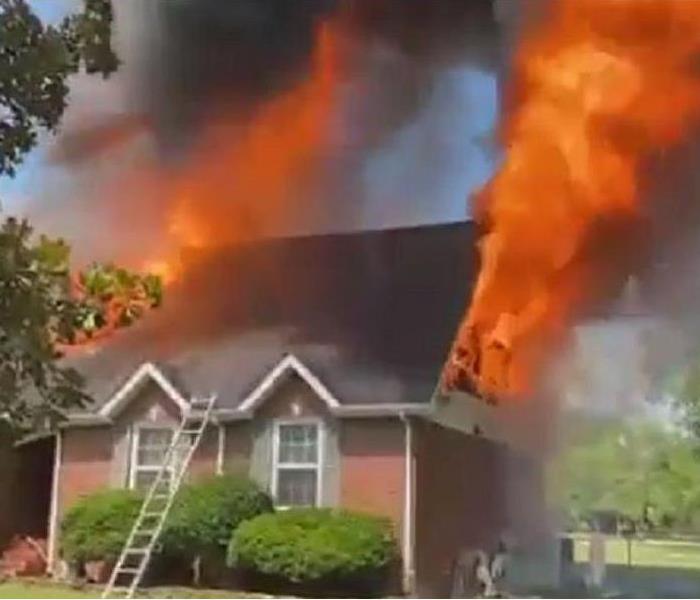 Make yourself a fire prevention checklist before moving into your new home!
Make yourself a fire prevention checklist before moving into your new home!
Moving into a new home of any kind in the Ulster County area brings with it many things to think about throughout the process. While a home inspection can give you important knowledge regarding general maintenance and structural soundness, once the place officially becomes yours, it is important to do your own inspection to evaluate the fire safety of the home. Many new homeowners in the Hudson Valley have lived in apartment or condo style homes before, so there could be some elements in your new place that you might not have considered previously.
Depending on the history of the property, you may need to make improvements before moving in so you can be certain that you will be fire-safe from the moment you unlock your new front door. Here are some key things to check for:
Doing a Fire Safety Inspection for Your New Home
Check the Smoke Detectors
The first thing you will want to check is the smoke detectors in the home, as over half of deaths. You will not only want to use the smoke detectors’ “test” feature to make sure they are functional, but you will also want to make sure that enough alarms have been installed throughout the home to keep everyone safe regardless of what room they are in. You should have a smoke detector on every floor, in every sleeping area and near the kitchen at a minimum.
Look Around for Fire Extinguishers
Fire extinguishers are something that usually gets sold with the house, but it is important to still check them if the previous owners left them behind. While fire extinguishers do not come with a hard expiration date, they do not last forever. You can easily check them by checking the
pressure gauge—if the needle is in the green part of the gauge, the extinguisher should still be functional. You should also make sure you have the right type of fire extinguisher; while many household models are multipurpose, some are only rated to put out certain types of fires.
Check and Empty the Dryer Vent
Though you are probably in the habit of clearing out your dryer’s lint trap every time you transfer in a load of laundry, inspecting the external vent is also something that should be done when you move in as lint is highly flammable. You can do this by pulling your dryer away from the wall and checking the vent that goes to the outside in order to prevent any debris or clothes lint from catching fire suddenly.
Have the Air Ducts Cleaned
If you have a central heat and air conditioning unit in the home, a good rule of thumb for better indoor air quality is to have the duct work inspected and cleaned. Over time, the unit collects debris, dust, pollen, dander and pollutants. While this is normal, the ducts get overloaded and can’t clean the air as needed and your system will work harder to maintain the environment.
Moving into a new home is exciting and is sure to bring years of wonderful memories. Should you ever experience fire or water damage, need your dryer vent or ducts cleaned, count on SERVPRO of Kingston/New Paltz to be there! Here to help with an emergency response 24 hours a day!
New and Clever Ideas to Help Prevent a Fire in Your Kingston Home
6/21/2022 (Permalink)
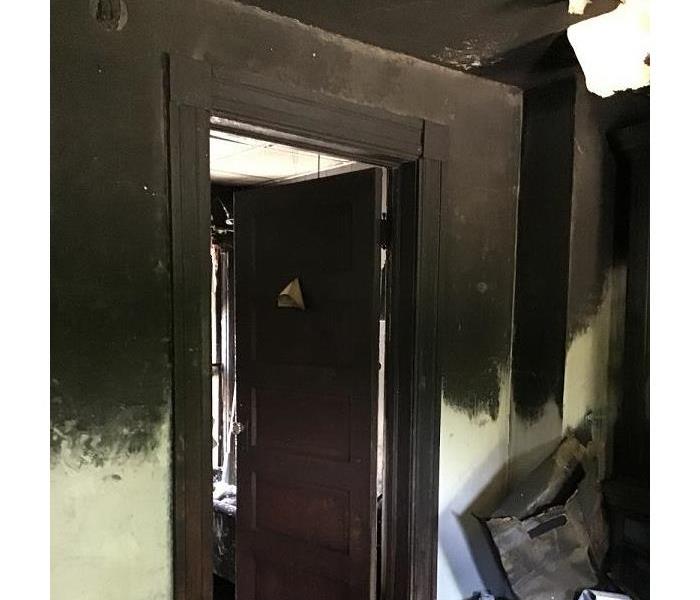 Smart thinking for fire prevention at your home can really make a huge difference!
Smart thinking for fire prevention at your home can really make a huge difference!
Even though house fires seem like less of a concern in the spring and summer months, they are still a huge concern for everyone in the Hudson Valley. It’s astounding that so far in 2022 the American Red Cross has assisted at over 20,000 house fires, which is only a small portion of the total number.
It’s always a smart idea to check your smoke detectors regularly, as they continue to be the best way to prevent any loss of life or extensive damage. Ensuring that you have complete coverage begins with a smoke detector in every bedroom, every floor and in places like the kitchen where appliances that generate heat exist.
Along with having the right equipment, there are many simple tasks you can complete that will also help lower your risk of suffering a house fire.
Cleaning Your Hazardous AppliancesIn Ulster County, we are proud to have many historic and legendary buildings all throughout our region. However, these buildings are likely outfitted with appliances and machines that are older than most.
Ancient appliances are more likely to malfunction and result in a fire because of their extended use and lack of safety mechanisms to prevent accidental disasters. Cleaning them regularly and checking them for any damage is the best way to prevent destruction.
Along with cleaning these appliances frequently, reducing the clutter in your home can allow proper airflows through it, reducing the chance that anything overheats and ignites.
Overloaded extension cords are another frequent cause of fires inside the home. When too many devices are plugged in, these devices are unable to handle the electricity and can burst into flames themselves.
Additionally, you should leave plenty of space between furniture and wall outlets to allow for proper air flow and prevent overheating.
Create a Defensible Space in Your YardWhen a fire begins outside and spreads toward your home, the surrounding land that constitutes your yard is the last thing preventing the flames from coming in. In recent years, landscaping techniques designed to prevent fires have become increasingly popular.
These strategies help protect your home from succumbing to a fire, and they allow emergency service workers to do their jobs with ample space. They have been so successful at preventing fires, that states are beginning to enforce defensible zone requirements for yards.
Requirements like these won’t stop you from planting your annual garden or refreshing your floral arrangement—instead, they focus on placing your plants in strategic locations that limit the amount of fuel fires have to burn. It’s also smart to remove any dead plants or leaves, as these are extra flammable and will keep fires going.
Keep It Clean & Keep It SafeIn addition to maintaining your appliances and yard, setting a good spring-cleaning routine can help you limit fire hazards. Set a block of time, roughly a week, that you will spend a bit of time each day working on it. This will help lighten the load and accomplish it piece by piece.
However, taking steps toward fire prevention doesn’t have to be a complex regimen. Easy jobs like dusting regularly can help reduce the risk of a fire. Focus heavily on dust near any appliance or outlet, as these are likely spots for dust fires to begin.
If you're dealing with fire damage in your home OR business, call us 24/7. SERVPRO of Kingston/New Paltz is always here to help!
What You Need to Start a Fire—or What to Subtract to End One
1/21/2022 (Permalink)
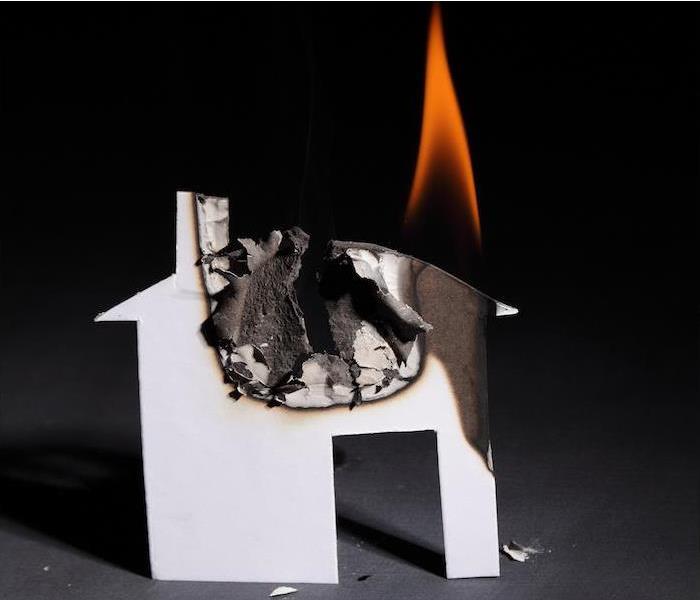 Learn what is needed to start a fire so you can learn what is needed to put one out!
Learn what is needed to start a fire so you can learn what is needed to put one out!
What is a tetrahedron? Well the short version is that it is a three-dimensional, triangular shape with four equal sides. OK, so now you know about the geometric shape, but why are we talking about it in a fire restoration blog? Well, there’s also something called a fire tetrahedron.
The term is a way of expressing that there are four components needed to start a fire—and without any of those four components (or “sides”), the fire will stop.
The 4 Things a Fire Needs to Live
Fuel. Just like anything in life, a fire has to have fuel in order to keep going. You’re probably most familiar with starting a fire using wood, but nearly anything, organic or inorganic, can fuel a fire.
Heat. As we all know, fire produces heat, but did you know that heat is required for a fire to start in the first place? Every object has a set temperature at which it will combust, resulting in the object melting or igniting.
Oxygen. Fire reacts with oxygen to produce a series of chemical reactions. In short, oxygen feeds the fire so that it can keep growing and generate products of combustion in the process.
Chemical Chain Reaction. The cycle of heat, fuel and oxygen combined produce a chain reaction. The fire will keep going as long as the chain reaction is undisturbed.
The 4 Ways to Stop a Fire
Cool it. When you think about how to put out a fire, water probably comes to mind. Dousing a fire in water is the most common way to put one out, but anything that cools the internal temperature of the fire will eventually extinguish it.
Smother it. Were you taught to “stop, drop and roll” in elementary school? This motto helps us remember what to do if our clothing catches on fire—and it also shows this method of stopping a fire. Fire requires oxygen, so when you lie down and smoosh your clothing into the ground, you starve the fire of the oxygen it needs. It will eventually die.
Starve it. A fire burns so long as it has the adequate fuel, whether grass, wood or other materials. You can be proactive in starving a fire by removing the fire’s fuel source while it’s still trying to burn.
Interrupt the chain reaction. Chemical agents can help put a stop to a fire because it will chemically disrupt the reaction that multiplies to keep a fire burning. Halon is a particularly effective chemical agent for this, but it has an elevated potential for ozone depletion, making it an environmental threat.
If the fire of any kind makes a wreck of your home or business, we’re here on standby around the clock to help you recover. Contact SERVPRO of Kingston/New Paltz anytime for fast, thorough cleanup and recovery after a fire. Locally owned and operate since 1992, making it "Like it never even happened."
The Increase Of and How To Prevent Winter Fires in Your Kingston Home
12/8/2021 (Permalink)
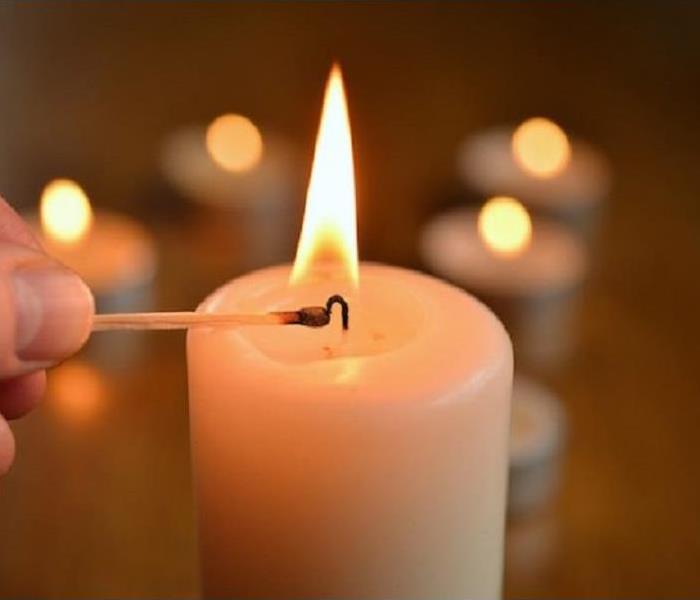 Stay in the know to prevent a winter time fire in your Ulster County home or business!
Stay in the know to prevent a winter time fire in your Ulster County home or business!
Take precautions now to help prevent winter fires in your Ulster County home. While winter brings about the holidays, it also brings colder temperatures and increased snowfall, and results in a higher likelihood of residential fires in the Hudson Valley.
In any given year, winter is the most common time for residential fires to begin. While not all the common winter fire causes are specific to the season, they are more common during cooler weather and thus increase the chances for a fire to occur. More festivities involving cooking, the use of candles, holiday décor and trees, utilizing space heaters and fireplaces all add to the increase of chances of a fire occurring.
Behind the Increased Likelihood of Winter Fires:
An Increase in Cooking-
At any time of year, cooking errors are the No. 1 cause of residential fires in the country, but even this statistic is increased in the wintertime. With more baking, holiday meals and group cooking opportunities, the chances for a cooking error tend to become higher during the winter months, leading to an increased fire rate. Never leave cooking food unattended in the kitchen. Keep a fire extinguisher at the ready, and if you’re going to deep fry a turkey, make sure it’s done safely outside and away from any structure (including the deck or garage).
The Risk of Heaters-
Wood stoves, fireplaces and space heaters are all common forms of auxiliary heating during cold weather, and as long as precautions are taken, they are generally safe. However, errors in heating are the second leading cause behind residential fires during the winter months, making safety features and supervision an essential part of these methods. Space heaters should always be plugged directly into the wall, never on an extension cord, and kept far away from flammable items, bedding and decorations. Fireplaces and chimneys should be cleaned by a professional every year to avoid creosote build up and potential hazards.
Candles and Decorations-
Candles and other decorations are another leading cause of residential wintertime fires. Candles are inherently hazardous due to the open flame—it can spread to surrounding areas if conditions are right. Don’t keep them near a door or window and never amongst the holiday décor that is usually super flammable. For electronics, frayed wires and general overheating can pose a fire risk, so it is important to be cautious with those as well.
Christmas trees that haven’t been watered or are drying out pose a huge fire risk. Over 150 home fires each year are caused by Christmas trees. Candles and lighting can spark a fire and a dry tree can go up in flames in seconds. Keep your tree watered regularly and away from any heat source.
Prevention Tips for Wintertime Fires:
Understanding the common causes of winter fires is an important step in prevention. By going about these activities with a safety-focused mindset and keeping the below tips in mind, individuals can help prevent any accidental fires from occurring this season:
- Keep your Christmas tree well-watered.
- Make sure holiday décor and candles are far from anything flammable.
- Make it a twice-yearly plan to check for frayed wiring and replace immediately if needed.
- Check smoke alarms once every 30 days and replace every 10 years.
- Always monitor open flames.
- Keep turkey fryers and outdoor grills at least 10 feet away from a structure.
- Select space heaters with automatic shutoffs in case they tip over. Never plug a space heater into an extension cord or power strip, only into a wall outlet.
- Utilize a screen every time you use a fireplace.
- Draft and practice an emergency escape plan with your household.
If you’ve suffered a fire at your home or business anywhere in Saugerties, New Paltz, Kingston, Highland, Woodstock or Rosendale, WE ARE HERE TO HELP. SERVPRO of Kingston/New Paltz is the local leader in property damage restoration and can help you recover quickly after a fire occurs. We’ll help make it "Like it never even happened."
Creating a Fire Escape Plan for Your Ulster County Home and Family
11/22/2021 (Permalink)
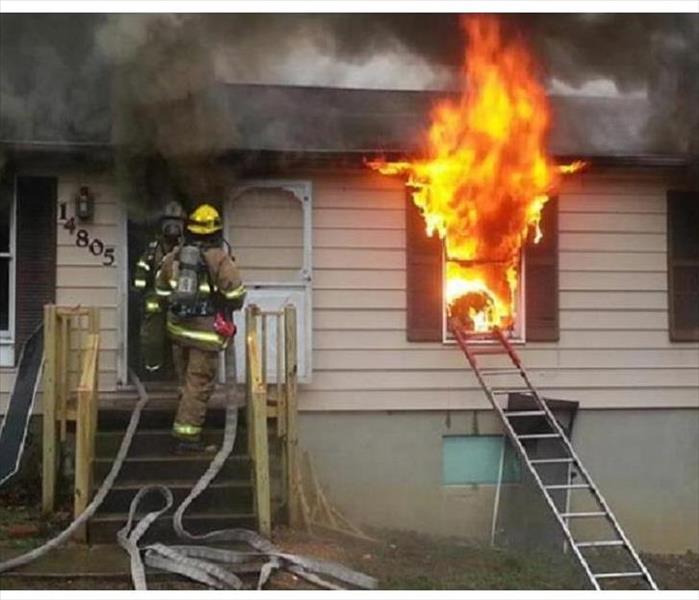 A solid fire escape plan can offer a lot of peace to you and your family if an emergency ever occurs!
A solid fire escape plan can offer a lot of peace to you and your family if an emergency ever occurs!
When a fire breaks out, it is human nature to be afraid, but everyone has a different reaction. Because it is not a scenario that most of us have ever been faced with, it can be alarming and overwhelming to experience. However, it’s important to try to remain as calm as you can in order to get yourself and your family members to safety.
A fire can start spreading in as little as 30 seconds, and experts estimate that you typically only have 3-5 minutes to react and get to safety when a fire starts. Therefore, it is important to have a fire escape plan that the whole household is aware of and practice it regularly. That way, when a fire breaks out, everyone will know exactly what to do to and where to go to stay safe.
Here are the steps to creating a fire evacuation plan:
- Create a custom plan. Every family is different, and every home is different, there is no one-size-fits-all approach to a fire escape plan. Make sure to consider elderly family members, children who are heavy sleepers and pets. Take note of time needed to get everyone to an exit and locate pets to get them to safety. Keep in mind, pets sense danger much quicker than we can and have been known to hide in hard to reach spots. Practice this exit plan often with ALL family members, including furry ones, so there are no questions or confusion should there be an emergency.
- Identify two exits. Each room should have two exits so those inside can escape no matter where the fire is. If necessary, equip upstairs rooms with emergency ladders so windows can be the second point of exit.
- Set a spot to meet. Pick a meet-up spot in advance that will be safe, such as a nearby landmark, a neighbor’s yard, tree or mailbox. Make sure everyone is clear on the location of the meet-up spot. Ask for their opinions should there be any obstructions and consider a well it area.
- Consider all scenarios. There are unthinkable scenarios that can contribute to a fire, and it is important to prepare for all of them. Do not focus on preparing for one source of a fire and neglect to prepare for others. For example, don’t focus on a fire only occurring in the kitchen when it can happen in the basement or attic.
- Practice often. Get the entire household together to run a fire drill at least twice a year using a mock scenario. Be sure any overnight guests are aware of the plan as well.
Tip: Get children excited about planning so they will be more involved in the process and less scared. Introduce a map of your home and have them color and mark up the exits.
Fire Prevention Tips
- Install smoke detectors in each bedroom and on every level of the home.
- Check smoke detectors once a month. Replace batteries every time the clocks change or at least every 6 months, even hard-wired detectors.
- Replace smoke detectors every 10 years.
- Make sure all candles are extinguished and no holiday décor is around them.
- Never leave open flames unattended.
- If you have a Christmas tree up, don’t let it get dried out. It can burn from hot lights in minutes.
- Do not overwhelm electrical sockets with excessive plugs.
- DO NOT plug space heaters into anything but an outlet and don’t use an extension cord. Power strips are not safe to plug a space heater into and can quickly cause an electrical fire.
- Keep combustibles like cleaners and chemicals in a safe place.
- If you are grilling outside, make sure the grill is cold before putting it back up against the house.
- Don’t run appliances at night like clothes dryers. Make it a yearly maintenance check to have the dryer vent cleaned out too.
If you’re ever faced with fire and smoke damage in your home or business, don’t hesitate to call us. Our fire damage emergency services are available 24/7 for all restoration needs. SERVPRO of Kingston/New Paltz is always here to help.
Fire Prevention Tips for your Woodstock, Saugerties, New Paltz or Kingston Home
8/12/2021 (Permalink)
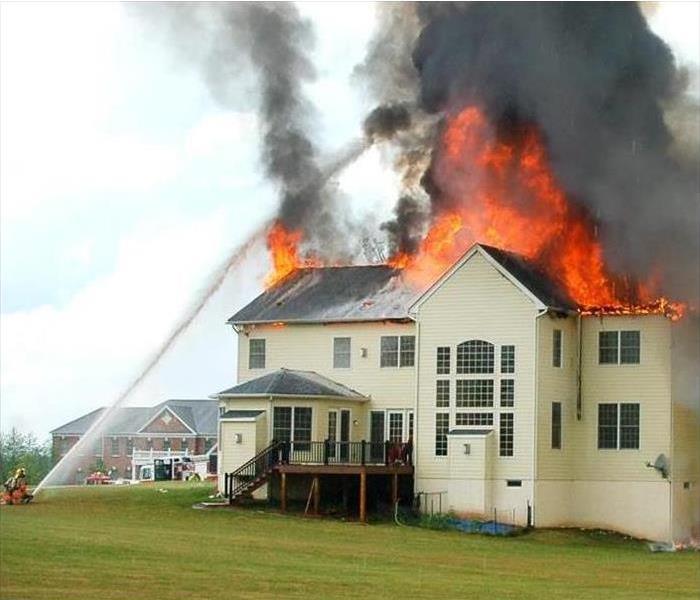 This could happen to your home in less than 3 minutes. Learn all you can about fire prevention!
This could happen to your home in less than 3 minutes. Learn all you can about fire prevention!
A fire can happen in less than 3 minutes. It’s scary to think that there is such little time to get everyone to safety, however there are many things you can do in your home to prevent fires, most of them quite simple too.
-Install smoke detectors in the right spots- When placed in the correct locations in your home, it’s your best bet of getting to safety quickly.
-Test your smoke detector batteries once a month. Set a reminder on your phone to make it consistent. Keep in mind that smoke detectors have a life of 8-10 years, replace them when needed.
-Inspect heating sources and have regular maintenance performed on them.
-Keep the oven and stove clear of anything- Make sure there are no curtains, towels, cookbooks, or anything flammable by or on the stove and oven. Kitchen fires are the most common places for house fires. Stay in the kitchen when cooking. Make sure pot handles are turned in and don’t leave the room with any food cooking. Turn off everything and take the pot or pan off the heat if you need to leave the room.
-Keep fire extinguishers handy- Have one in the kitchen and other high-risk areas like a fireplace or garage. Learn the P.A.S.S system for how to use it effectively.
-Check the dryer and have dryer vent cleanings performed once a year. The build up of lint, dust and debris is a significant fire hazard.
-Maintain electrical cords- don’t keep them under a rug as cords produce heat. Use extension cords sparingly and unplug appliances that feel warm. Don’t plug in appliances to an extension cord, plug them directly into the wall. Check for fraying or damage and replace immediately.
-Locate the utility shut-offs- All utilities have shut-off valves or switches in or on your home. Gas, appliances, circuit breakers, and water. Make sure all family members know where, when and how to use them.
-Keep flammable products away from heat sources- aerosols and hair products, cleaners, and shaving cream and combustibles like paint and gas should be kept in a cool, dark place.
-Never, ever, leave candles unattended- Keep them in secure, tip-proof holders and never near curtains or blankets. Set a reminder on your phone to extinguish them before leaving or sleeping. Check and double check that a cooling candle is nowhere anything that can burn.
-Practice fireplace safety- put a metal screen in front of the area, don’t leave the fireplace unattended and place the ashes in a metal container. Do not put the ashes in a plastic bag or any other vessel, you’d be surprised how long ashes can stay hot. Have a chimney cleaner come at least once a year to prevent build up that could cause a fire.
-Prevent wildfires- Keep a bucket of water available if you’re using a fire pit, having a bonfire or using a burn barrel. If you smoke, keep it outside and always have a water source to extinguish. It only takes one spark!
-Know your location- firefighters need an exact address, make sure every family member knows it.
Learn all you can about fire prevention and talk it over with your family members. If you do ever experience fire damage, call the trained experts at SERVPRO of Kingston/New Paltz 24/7, we’re here to help and make it "Like it never even happened."
Choosing the Right Fire Extinguisher and How to Use One in Your Kerhonkson Home
7/20/2021 (Permalink)
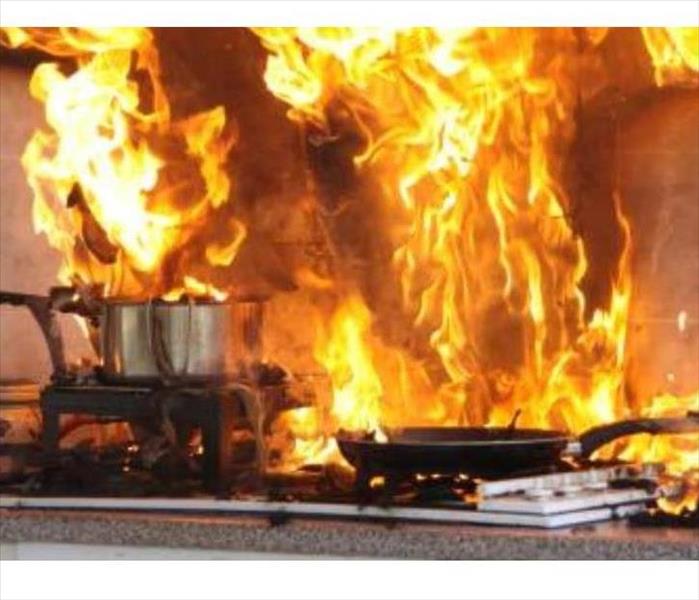 Know how to use a fire extinguisher BEFORE you have to know!
Know how to use a fire extinguisher BEFORE you have to know!
You probably have a fire extinguisher in your kitchen, maybe even one in the garage too. A fire extinguisher can really help put out a small fire before emergency personnel arrive at your Ulster County home and can help you exit quickly to safety. Keep in mind though, that not every extinguisher is for every type of fire, so what type would you need and where?
All household fire extinguishers have the top 3 classifications: A, B or C. Some models have a combination of all three extinguishers in one. Some models are for commercial use or industrial specifications, classified as D or K extinguishers.
-A is for ordinary combustibles like trash, wood and paper
-B is for liquids & grease (like stove-top and grease fires)
-C is for electrical equipment and wiring fires
A good note to remember, according to the National Fire Protection Association, each floor of your home should have an extinguisher.
Do you know how to use a fire extinguisher? How about your family members?
To use an extinguisher properly, you want to use the PASS method:
PULL, AIM, SQUEEZE, SWEEP
-Pull the pin. Hold the nozzle pointing away from you and release the locking mechanism.
-Aim low. Point the extinguisher at the base of the fire instead of at the flames themselves. Standing at least 6 feet away from the fire is important! Do not touch the plastic discharge horn on a CO2 extinguisher as it gets extremely cold and may damage your skin.
-Squeeze the lever slowly and evenly while keeping the extinguisher upright.
-Sweep the nozzle from side-to-side until the extinguisher runs dry.
Always read the instructions on the fire extinguisher and get familiar before a fire breaks out. Hold small trainings for your family members as well. Remember, extinguishers do have limitations so make sure you have the correct extinguisher for your home and type of fire.
Whenever you use an extinguisher, whether you ran it dry or used it briefly, it's important to replace it or refill it right away. This is also the rule for any gauge that goes down to the red zone over time.
SERVPRO of Kingston/New Paltz has experienced and trained experts and is the local leader in the industry of fire damage remediation. If you experience fire damage in your home, don't hesitate to call us, 24/7 for emergencies. We’re here to help and will make it "Like it never even happened."
Why Grease Fires Can Cause a Permanent Smell in Your Kingston Home
6/24/2021 (Permalink)
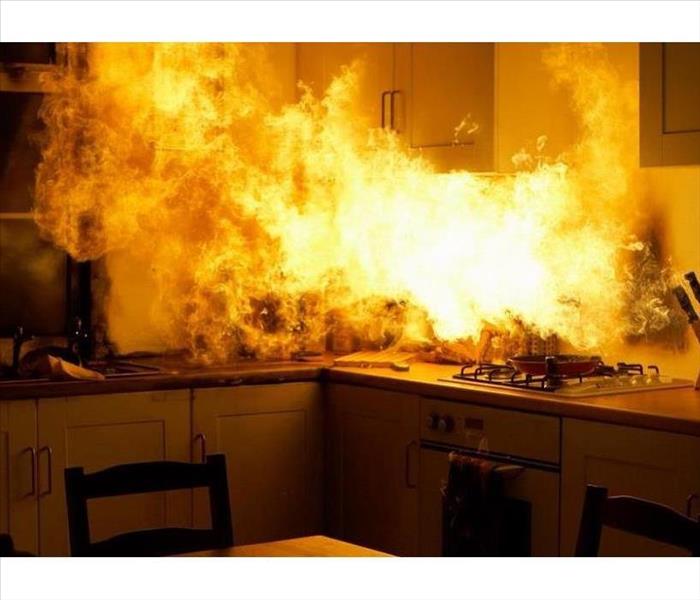 Contact SERVPRO of Kingston/New Paltz to get your home back to normal after a grease fire!
Contact SERVPRO of Kingston/New Paltz to get your home back to normal after a grease fire!
Accidents happen and cooking with oil or grease can ignite and cause a kitchen fire much easier than you think. There are some little-known facts about food fires that make the smell and damage in your home quite tricky to get rid of.
Protein fires usually start from food that is burnt in the kitchen. Think about a cooking pan on the stovetop and the grease has caught fire. Due to the chemical makeup and structure of food proteins, grease can make an especially unique restoration challenge and create odor issues that are difficult to get rid of yourself when they burn.
Important things to know regarding protein/food fires:
*Generally, these types of fires leave little visible residue, often confusing to someone who isn’t trained locate and get rid of. The smell is there but hard to pinpoint where it could be coming from. Occasionally, you might come across a sticky residue on the walls or upper cabinets. Once dust particles have settled on a surface, this creates an unpleasant coating that’s tough to get off without professional products and experience.
*Protein fires create a significantly more distasteful smell than most other fires. Pungent, acrid, noxious, and thick are ways our clients have explained the smell.
*The nature of the burn causes odor to permeate even more completely than other fires, into everything. Inside cabinets that weren’t opened, in a room on the other side of the home, sometimes on a whole different floor. Items or belongings you never thought would’ve been affected could have some lingering and unforeseen issues. Sometimes the damage can require a sealing agent or even stripping and repainting to completely eradicate the odor.
*If the damage is part of a homeowner’s insurance claim, the insurance carrier will likely recommend hiring a professional, seasoned restoration company to take care of everything so it’s a complete job at one time rather than doing it yourself which is extremely time consuming and costly.
*Keep in mind that the damage may require multiple attempts and methods to achieve the best results. Using a certified remediation company will decrease the attempts and are effective and efficient.
Don’t tackle this issue by yourself, let the trained and certified experts at SERVPRO of Kingston/New Paltz take care of it. There is no damage too small or large and with over 25 years of LOCAL experience, we can tell you that When fire and odors take control of your life, we’ll help take it back!.
We're Here If Your Highland Home Suffers Electrical Fire Damage
2/3/2021 (Permalink)
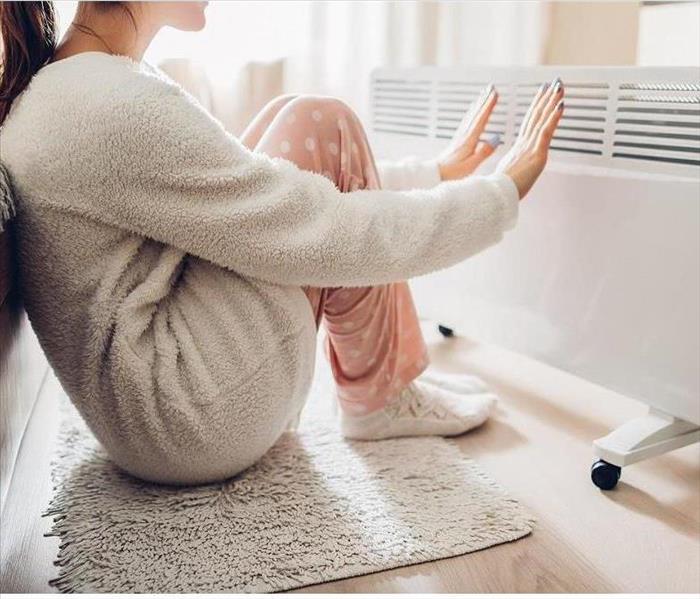 Electrical fires happen more often in the winter months. Check your home's wiring, be careful with space heaters and don't ignore scorch marks!
Electrical fires happen more often in the winter months. Check your home's wiring, be careful with space heaters and don't ignore scorch marks!
Did you know house fires are more common during the winter months than at any other point during the year? It's true that while fires can happen during any season in Ulster County, colder months come with additional risks—many of those revolving around the ways we light and heat our homes.
Electrical fires are more common during the winter, and more than 44,000 of them happen in the U.S. every year. The good news is that you can take steps to ensure the wiring in your home is safe.
Don’t ignore issues. If you notice anything that could be a sign of electrical problems, like burn or scorch marks on your walls near light fixtures or a burning smell when you plug in your appliances, seek help from an electrician immediately. These can be warning signs that something bigger is wrong, and it’s smart to address them.
Make sure your wiring is up to date. If you’re living in an older home, it’s smart to have a licensed electrician evaluate your wiring. It can be worth it to rewire your home if it has certain types of outdated wiring. Plus, taking this step can, in some cases, help you save some money on your homeowner’s insurance. Check with your local insurance agent for policy discounts.
Don’t leave appliances that generate heat plugged in. You’ll lower your risk of an accidental fire if you don’t leave items such as your toaster oven or hair dryer plugged into the outlet. Instead, only plug them in what you’re using and keep an eye on the devices while in use.
Space heater safety! If you must use a space heater, make sure it’s not plugged in to an extension cord, the safest bet is to have the heater plugged directly into the outlet.
Our team is always ready to respond and help you restore your home. Call us at any time to learn more about our restoration services. We’re here to help get you back to preloss condition and make it "Like it never even happened."
How SERVPRO Helps If You’ve Had a Fire in Your Kingston Home
12/9/2020 (Permalink)
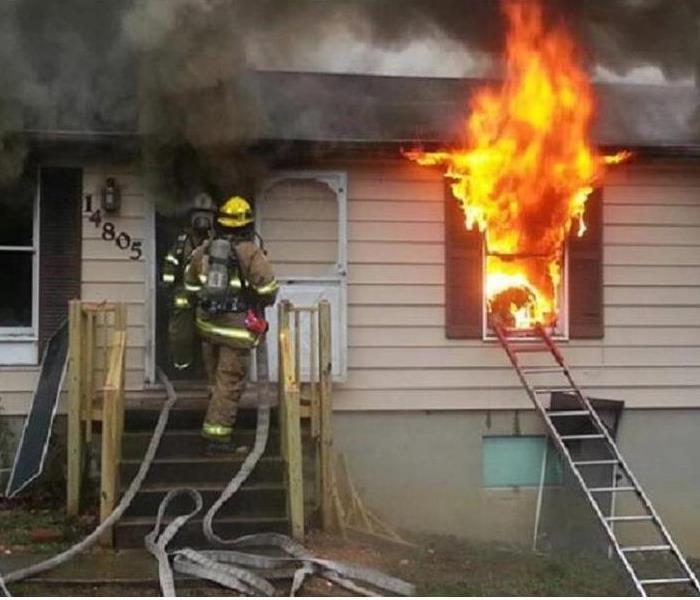 Call SERVPRO of Kingston/New Paltz when you've suffered a fire in your home.
Call SERVPRO of Kingston/New Paltz when you've suffered a fire in your home.
Having a team on your side after a disaster and knowing what will be done to restore your home can help relieve the overwhelming feelings after a fire.
SERVPRO of Kingston/New Paltz is always here to help when a fire strikes.
Any time of year is a good time to practice fire preparedness, but homeowners should be especially careful during the winter months. The highest number of home fires occur in the winter, with December being the peak.
Planning for a fire in advance is one of the best ways to keep yourself and your loved ones safe. A fire escape plan and emergency precautions are helpful in the moment, but knowing what to do after the fact can also provide valuable peace of mind. That is where picking a restoration company in advance comes into play.
The Process of Fire Restoration
When you pick your fire restoration company in advance, you want to know that you can call them any time of day and have them respond quickly. Your call will be answered by a live agent, ready to take your information and get help on the way. Not only do we guarantee that for our clients, but we also guarantee that we will send highly trained and experienced technicians to the scene who are well-versed in a variety of cleanup scenarios. Here are the ways we can help:
Structural Cleaning
Correctly repairing a home’s structure after a fire is essential, and it is something we take very seriously. We will work directly with your insurance company for a stress-free claims process and create a custom strategy of remediation. By first performing testing to determine the true extent of the damage, we will then move in with our specialized equipment and begin the restoration process. We handle all forms and level of fire damage, water and extinguisher damage, soot removal and cleaning on walls, doors and floors, and get all surfaces gleaming clean and ready for fresh paint.
Contents Cleaning
With our restore vs. replace mentality, our goal is to bring your home and personal effects back to preloss condition. Restoring contents is typically less costly than replacing all your belongings and allows you to keep the things you already own. We have both wet and dry-cleaning procedures and equipment to ensure each item gets the care it needs, from art to area rugs and most things in between. A full cleaning and deodorizing ensure the items are still safe to use and do not have any lingering odors.
Deodorization Services
The smoke and soot left behind in the air after a fire are harsh and sometimes acrid odors due to the chemicals and compounds in combusted material. We utilize air scrubbers to take care of these particles, not only removing acrid odors but improving air quality once again throughout your household.
Trust the local restoration company that has been restoring your Ulster County community for over 25 years. If you’ve been affected by a fire of any type or size, we’re here to help you recover 24/7 and will make it "Like it never even happened."
The First Steps to Handle Fire and Smoke Damage at Your Kingston Home or Business
11/18/2020 (Permalink)
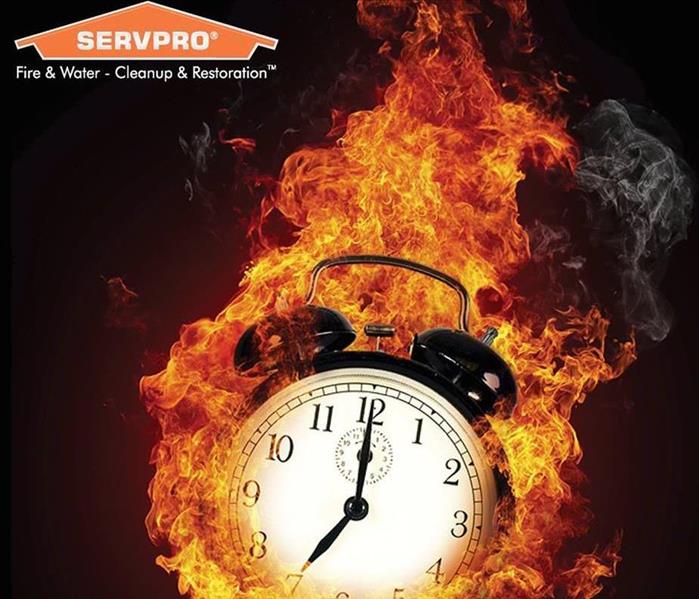 Time is of the essence when dealing with a property fire. Call your insurance company, then call SERVPRO of Kingston/New Paltz!
Time is of the essence when dealing with a property fire. Call your insurance company, then call SERVPRO of Kingston/New Paltz!
What to do, who to call and how to deal with any kind of fire damage brings on a whole set of emotions, choices and decisions that you most likely haven’t had to deal with before and can leave you feeling overwhelmed.
SERVPRO of Kingston/New Paltz is here to help you every step of the way in terms of what to do and not to do in case of a fire. Once the firemen have deemed it safe to go in (in some cases they won’t) and you’ve called your insurance company to file a claim, here are some important things to consider in this situation:
-DO NOT attempt to consume and food or beverages that have been stored close to fire, heat or water damage that might’ve stemmed from the fire suppression. They could be contaminated. Even if the fire was on the other side of the house, smoke and soot will ALWAYS travel and end up inside cabinets, in drawers, even inside closed closets. Soot is made up of tiny carbon particles created by incomplete combustion of fossil fuels (wood, oil, coal, and more). It contains lots of acids, as well as chemicals, metals, soils, and dust. None of this should be ingested and therefore…..
-DO NOT wander around inside the property. Keep your movements limited to help prevent soot particles from getting embedded into upholstery and carpet. Keep your hands clean to avoid further soiling. It’s understandable you’ll want to remove valuables, important papers and the like but this should be done as quickly as possible and with the smallest amount of traveling in and out of the house as possible.
-DO NOT turn on ceiling fixtures, they could’ve gotten wet or damaged and could cause electrical shock. In most cases, the electric has been turned off anyway as to not be a danger for the firefighters. Even if you still have electric, that ceiling fan will only make the soot and smoke fly around more.
-DO NOT attempt to clean carpets, garments, electrical appliances, walls or painted surfaces BEFORE contacting your insurance company AND SERVPRO of Kingston/New Paltz professionals. It’s likely that your insurance company will instruct you not to touch or clean anything, they have an investigation of their own to do.
Once permitted to do so, our trained and certified fire damage restoration techs utilize the most innovative equipment and most effective methods of cleaning smoke and soot from everything in your home, including electronics, paperwork, photos and artwork. Our goal is to restore versus replace. Let our teams take care of the hard part, it’s one less thing for you to have to consider in a time like this.
We will work directly with your insurance company to help get your home and life back to preloss condition as effectively and efficiently as possible. You’ll be amazed at how clean, fresh and back to normal your home or business can be using the experts from SERVPRO of Kingston/New Paltz.
Call us 24/7, we’re always here to help.
The Steps of Fire Damage Restoration At Your Esopus Home
11/5/2020 (Permalink)
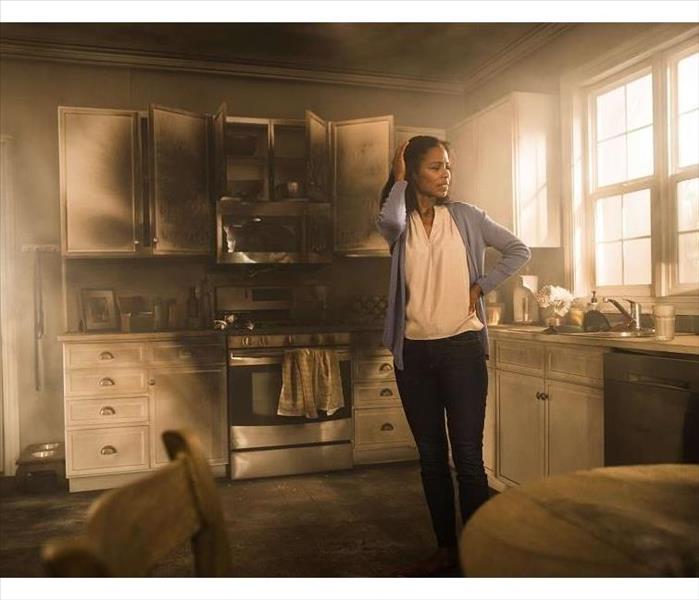 Knowing who to contact for damage restoration and the steps involved can help reduce the uncertainty afterwards when suffered fire damage.
Knowing who to contact for damage restoration and the steps involved can help reduce the uncertainty afterwards when suffered fire damage.
Any time of year is a good time to practice fire preparedness and revise your family’s escape plan as needed, however everyone should be especially careful during the winter months. The highest number of home fires are in the winter, with December and January being the peak months. Holiday decorations, dried out Christmas trees, electrical issues, candles burning, clogged chimneys, and space heaters running, the chances climb significantly.
Having a plan in place for a fire is one of the best ways to keep you and your family safe. A fire escape plan and emergency precautions are helpful in the moment, but knowing what to do afterwards is valuable and far less overwhelming than being in the dark about it all. Picking the right fire damage restoration company is vital in this process.
What is Their Process of Fire Restoration?
When you pick your damage restoration company in advance, one of the first things you’ll want to know is that you can call them no matter when and have them respond quickly. Not only is SERVPRO of Kingston/New Paltz ready to help 24/7, but we also guarantee that we will send highly trained, certified and experienced professionals to the scene.
No two fires are the same, here are just a few of the ways we can help:
Step 1: Emergency Contact
The restoration process begins immediately when you call us. Our staff will ask questions regarding the fire damage event that will help us respond immediately with the appropriate equipment and resources.
Step 2: Inspection and Fire Damage Assessment
Our certified technicians will carefully inspect and test adjoining rooms of your property to determine the extent of the fire, smoke, and soot damage. This step is crucial to developing a customized course of protocol and action. We’ll work directly with your homeowner’s insurance for any necessary emergency services and further remediation.
Step 3: Immediate Board-Up and Roof-Tarp Service
Fire damage can often compromise windows, walls, and roofs. To maintain security and to protect against further damage, if needed, we’ll board up missing windows and walls and place tarps on damaged roofs.
Step 4: Water Removal and Drying (if water damage is present)
Drying out the structure quickly is key to avoiding secondary damages. The water removal process will begin almost immediately and removes the majority of the water. We then use dehumidifiers and air movers to remove the remaining water and complete the drying process.
Step 5: Removal of Smoke and Soot from All Surfaces
We use specialized equipment, proprietary products and techniques to remove smoke and soot from ceilings, walls, and other surfaces.
Step 6: Cleaning and Sanitizing
Following a “restore vs. replace” mentality, our teams will clean, sanitize, and disinfect all the salvageable and restorable items and structure that were damaged by the fire utilizing a variety of cleaning techniques to restore your belongings to pre-fire condition. We’re also trained to remove odors using industrial air scrubbers and fogging equipment. The goal is to salvage everything we possibly can for you, rather than you having to replace everything.
Step 7: Restoration
Restoration is the final step—getting your home back to its pre-fire condition. Restoration may involve minor repairs, such as replacing drywall, painting, and installing new carpet; or it may entail major repairs such as the reconstruction of various areas or rooms in a home or business.
SERVPRO of Kingston/New Paltz has your back every step of the way, from start to finish. If you’ve been affected by a fire, call us right away! We are here 24⁄7 to help you recover.
Fire Safety Tips Just in Time for Fall in Ulster County
10/1/2020 (Permalink)
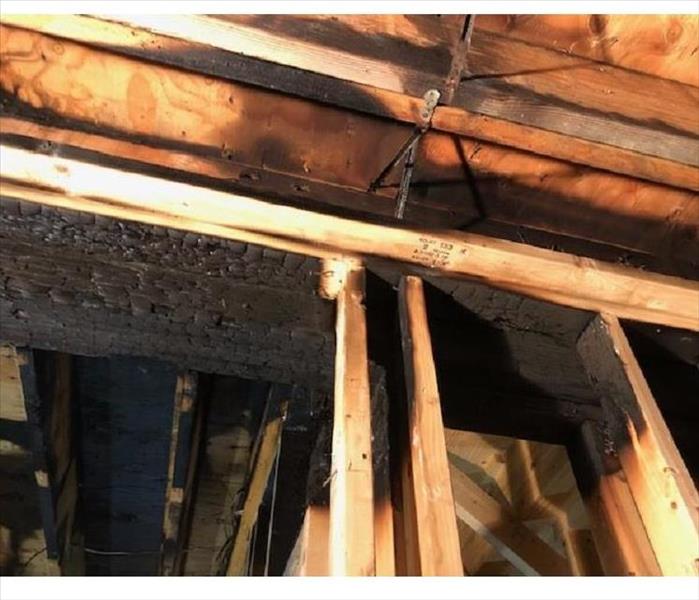 Be in the know about fire safety tips no matter the season!
Be in the know about fire safety tips no matter the season!
As summer has drawn to a close and we begin preparing our Kingston, Rosendale, New Paltz, Highland and Saugerties homes and our outdoor spaces for fall, it is important that we consider how to update our fire safety efforts to complement the season. Many fire safety tips will be the same as the ones you should be cognizant of throughout the year, but as the weather turns chilly, there are new considerations as well.
Statistically, fires tend to happen more when the weather turns cooler, often due to the use of heating appliances and an uptick in candles.
Fortunately, there are plenty of tips to help you stay safe from these risks.
Fall Fire Safety Tips for Your Household
-Stay Safe With Space Heaters
When it turns chilly, many of us will reach for the space heaters before turning our central system on. While space heaters can be used safely, they are a leading cause of household fires because of how often they are used improperly. Be sure to keep a three-foot buffer around heaters that is free of flammable objects, and always unplug them if you are not in the room.
-Practice Good Candle Habits
Candles smell great and are super cozy, but they can also be dangerous. As nice as candles are, they do still contain an open flame—they always present a level of risk. Never leave candles unattended when lit and to extinguish them before leaving the room. Also be certain that there are no flammable items near a candle that could potentially catch fire if the flame burns too high (decor, papers, clothing, drapery).
-Keep Your Fireplace Functional
If you have a fireplace, make sure you get it inspected before ever lighting a fire in it. There are many issues that can develop with chimneys that can cause smoke or fire hazards inside the home. Always use a fireplace grate to avoid any accidents and never leave a fire burning unattended.
If you have had damage in your home or business due to a fire, we are here to help you. You can get in touch with us at any hour so our fire restoration technicians can take care of your fire damage.
Contact us today.
Why You Shouldn’t Try to Clean Smoke and Soot Yourself at Your Kingston Home
9/25/2020 (Permalink)
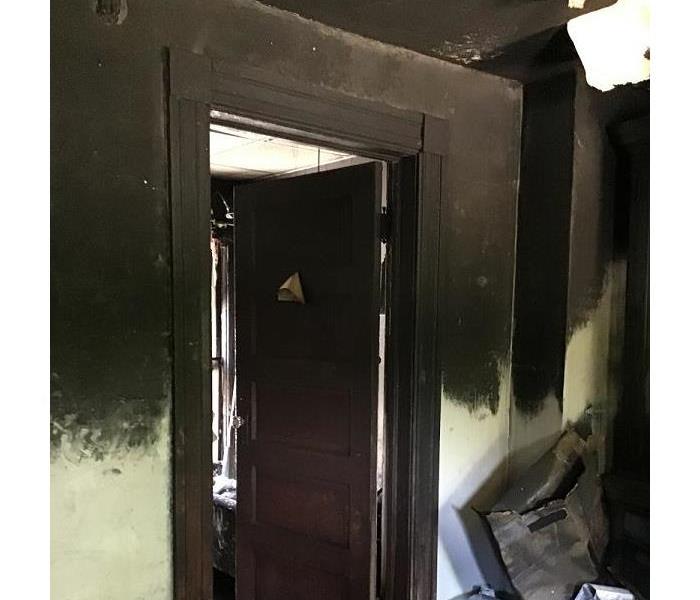 Don't try to clean fire damage yourself, call the experts at SERVPRO of Kingston/New Paltz!
Don't try to clean fire damage yourself, call the experts at SERVPRO of Kingston/New Paltz!
Smoke and soot are very invasive and will get into various cavities within your home, ones you never thought of and can cause hidden damage and odor. For example, if you had a fire in your kitchen, the linens on your bed on the other side of the house were probably affected as well. The closed closet doors in the hallway can’t stop smoke and soot from getting in either.
Smoke Facts:
-Hot smoke migrates to cooler areas and upper levels of a structure.
-Smoke flows around plumbing systems, seeping through the holes used by pipes to go from floor to floor.
-The type of smoke greatly affects the restoration process.
Different Types of Smoke and Soot:
There are two different types of smoke–wet and dry. As a result, there are different types of soot residue after a fire. Before restoration begins, SERVPRO of Kingston/New Paltz will test the soot to determine which type of smoke damage occurred. The cleaning procedures will then be based on the information identified during pretesting.
Wet Smoke – Plastic and Rubber: Low heat, oxygen starved, smoldering types of fires. Usually a pungent odor and are sticky and smeary. This produces smoke webs that are more difficult to clean.
Dry Smoke – Paper and Wood: Oxygen-rich, fast burning, high temperatures, heat rises therefore smoke rises. Occurs with natural materials, the odor is less intense than wet smoke.
Protein Fire Residue – Produced by evaporation of material rather than from a fire. Virtually invisible, discolors paints and varnishes, extreme pungent odor, clings to all surfaces, requires extensive cleaning to achieve deodorization and remove residues.
Fuel Oil Soot: Occurs from furnace or oil burner puff back or misfire due to a cracked heat exchanger or internal combustion in the heating system.. Attaches to every surface and the odor varies from very light to very heavy.
Since each smoke and fire damage situation is a little different, each one requires a unique solution tailored for the specific conditions. The fire remediation teams from SERVPRO of Kingston/New Paltz have the experience, the knowledge and the right equipment to restore your fire and smoke damaged property efficiently and effectively. We’ve been locally owned and operated for over 28 years and pride ourselves on being able to make it “Like it never even happened.”
Call us 24/7, our emergency response teams are always here to help.
Easy Kitchen Fire Safety Tips for your Kingston Home
8/19/2020 (Permalink)
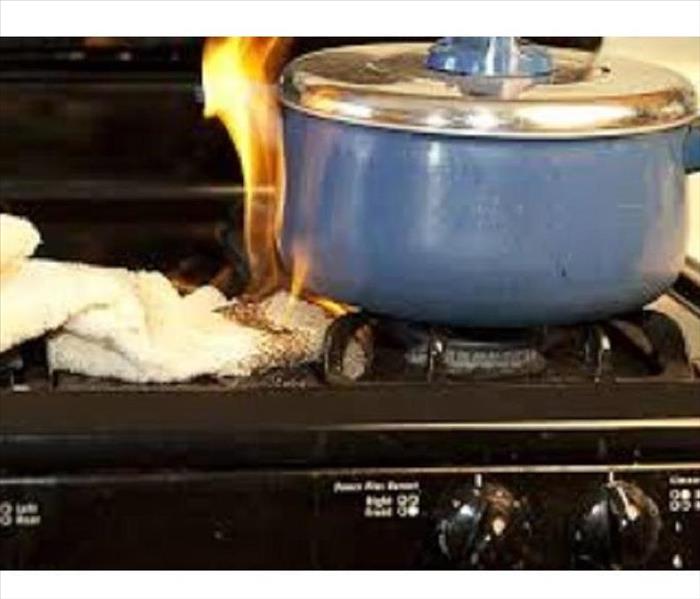 Cooking fire safety tips can help prevent a major disaster from happening in your kitchen and your home!
Cooking fire safety tips can help prevent a major disaster from happening in your kitchen and your home!
Preparing meals is something most of us do in our Ulster County homes for virtually every meal, but being so used to it can lead to relaxed safety measures that can put you and your family in danger.
The good news is that when it comes to fires in the kitchen, many can be prevented. If you practice a bit of safety every time you cook, you can significantly reduce your chances of experiencing a kitchen fire. Accidents happen, but some helpful tips can really go a long way for kitchen safety.
Important safety tips to get you started:
-Stay alert and attentive. Unattended cooking can be extremely dangerous, as equipment can catch fire and quickly turn to a disaster if no one is in the room to catch it early. Always stay in the kitchen while the stove, oven or other appliance is on, and it’s highly recommended to completely avoid cooking if you are sleepy or have consumed alcohol.
-Keep items away from stove tops and ovens. While potholders, wooden cooking utensils and dish towels are an integral part of being in the kitchen, they are also quite flammable. Keep these things at a good distance from the stove top to avoid having them accidentally catch fire.
-Create a safety buffer around your stove. This should be a 3-feet area around you and your stove that stays free of children and pets in order to prevent burns and spills that could become injuries and fires.
-Keep a fire extinguisher handy. While you should only use a fire extinguisher if it is completely safe to do so, having one handy can prevent a small accident from turning into a major disaster.
Make sure your fire extinguisher is classified to extinguish grease fires, as these are quite common in the kitchen and should never be doused with water.
If you experience a grease or kitchen fire in your home, don’t hesitate to reach out to us immediately. As the experts in fire damage restoration in the Ulster County area, we’ll help make it "Like it never even happened."
Fire Safety Hazards When Grilling at Your Home in Saugerties!
7/29/2020 (Permalink)
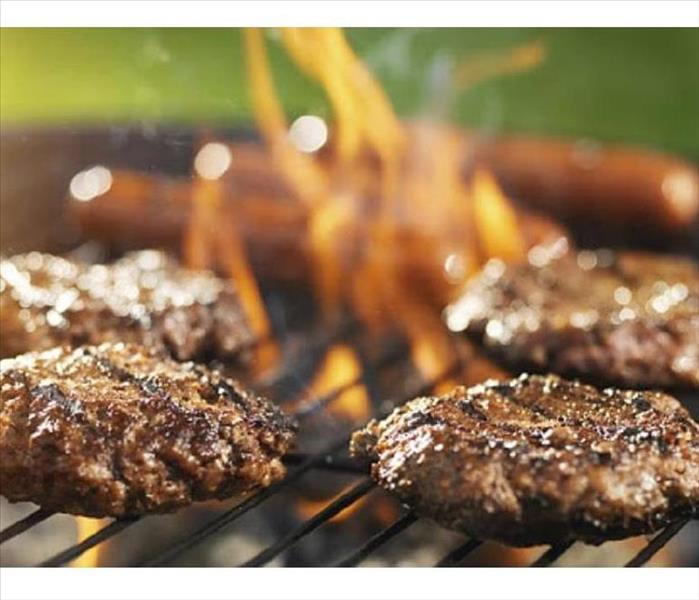 If you suffer any kind of fire damage to your property from grilling, call SERVPRO right away so we can help!
If you suffer any kind of fire damage to your property from grilling, call SERVPRO right away so we can help!
Nothing says “summer” like a barbecue! Beautiful weather in Ulster County, great tasting food and less mess in the kitchen, but it is important to note that with fires as a concern, precautions must be taken. Having an understanding of grilling safety can help avoid a disaster in injuries and fire damage to your home.
Grill fires are all too common, occurring over 5,700 times annually according to the National Fire Protection Association. There are a number of ways to help prevent a grill fire:
-Stop Grill Fires From Starting With These Tips-
- Create a safe zone around your grill. Closer is not better. A flare-up from your grill can be quite large, or thinking your grill is cool enough to move back against the house are quick ways to lead to fire damage, it’s recommended to have 10 feet of empty space away from a structure of any kind as precaution.
- Clean your grill grates often. With each use, your grill grates can become saturated with food and grease that have become stuck over time. Brushing down your grates after each use is always recommended—not only will this keep your grill’s temperatures consistent, but it will also prevent these food bits from becoming too hot and catching fire.
- NEVER leave the grill unattended. The difference between a close call and a full-on fire is often a nearby person with a fire extinguisher. If you must take a break, be sure to have someone watch the grill in your place just in case, have a fire extinguisher ready and know the safety plan.
- Inspect the grill regularly. All things can become worn with age, including the gas connections on your grill. Because this can lead to hazardous gas leaks, you can make a habit to visually inspect your grill before each use to reduce the chances of an issue arising. If it looks wrong, it probably is. Best not to attempt danger with a malfunctioning grill.
If you have a grill fire that does damage to your home, we are here to help. You can call us any time, day or night, to have a quick response from our restoration experts. Here to help since 1992.
Your Ulster County House Fire Recovery Process, Rely on SERVPRO of Kingston/New Paltz
6/26/2020 (Permalink)
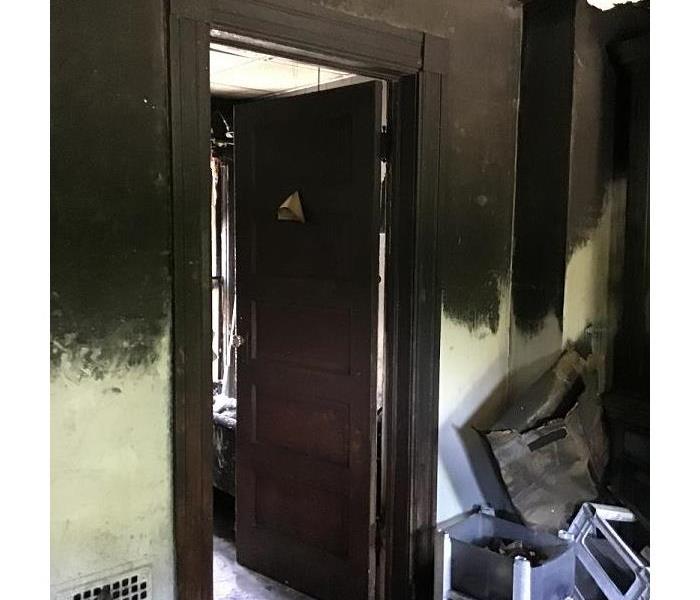 If you experience a house fire, SERVPRO of Kingston/New Paltz is here to help 24/7.
If you experience a house fire, SERVPRO of Kingston/New Paltz is here to help 24/7.
Making preparations ahead of time in case of a house fire at your Kingston home, is a smart way to keep yourself and your family safe and prepared just in case one were to break out. Not only is it crucial to plan, but you should also have an action plan for the recovery process so you will know what to expect, who to call and be able to handle it with ease.
By being prepared, you can significantly reduce your stress and the feelings of overwhelm that can come with the aftermath of a house fire.
Prepare yourself for what to expect.
You won't know what your home will look like before you go into it, but understanding how fire causes damage can help prepare you for what to expect. Not only do flames cause charring on objects they come into contact with, but smoke and soot are airborne and can damage other parts of the home as well.
Wait to enter your home. Safety is always our top recommendation, including in the aftermath of a fire. Never go back into the home before officials deem it safe, as they will need to assess the damage and potentially stabilize the structure to lessen the risk of injury.
Contact your insurance company. Filing an insurance claim as quickly as possible is always recommended so you can maximize the value of your coverage, but every insurance company varies on what this looks like. Contacting them early on is recommended so you know exactly what to do. They have a full process in place for these situations and will be giving you helpful information.
Document the damages. Staying organized is key to making sure nothing falls through the cracks, especially when it comes to keeping track of your belongings. Create a detailed inventory list so you know exactly what has been impacted by a fire, and be sure to take plenty of photos in case your insurance agent requests them for your claim.
Contact your restoration company. The stress and emotional trauma that can linger after a house fire is something to take seriously, as it can be long-lasting. Working with a restoration company you can put your faith into will help you during this delicate process, because you will know your home is in qualified, professional hands.
If your home is damaged in a house fire, you can count on us to help you. Get in touch at any hour for a quick response.
Putting Fire Safety Measures in Place Around the House | SERVPRO® of Kingston/New Paltz
2/7/2020 (Permalink)
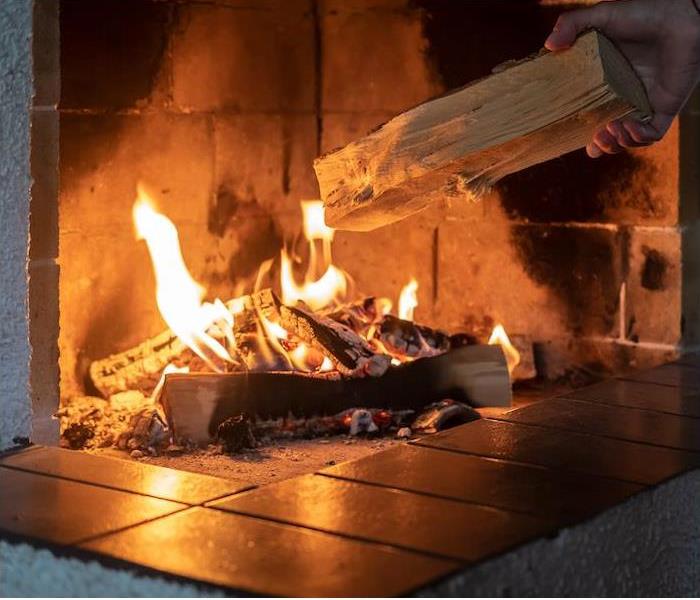 A house fire can occur when you least expect it. SERVPRO of Kingston/New Paltz is on call 24/7 and will guide you through any fire restoration project
A house fire can occur when you least expect it. SERVPRO of Kingston/New Paltz is on call 24/7 and will guide you through any fire restoration project
Regardless of their size, fires that break out in your Ulster County home can be a traumatic event. Fires can start for an alarming number of reasons, but thankfully, by practicing fire safety, households can drastically reduce the chance that one will occur.
By putting the right fire safety measures in place around the house, individuals can be much less likely to experience a fire and much safer if one does occur. To help you prepare, we have put all of the top tips in one convenient article for your reference.
An Overview of Fire Safety Measures*Frequently Check Smoke Detectors. Installing and maintaining smoke detectors in the home is the clear first step against fire safety. Having operational smoke detectors reduces the risk of fire injury or death, and it can ensure you can call the fire department much more quickly to reduce the damage to the home.
*Have a Fire Escape Plan. Having a clear and efficient plan for evacuation in the event of a fire is the best way to make sure everyone gets to safety once the alarm sounds. Make sure each room has two designated exits and that fire alarms can be heard from every area of the home.
*Know How to Operate a Fire Extinguisher. Owning and knowing how to operate a fire extinguisher can help stop the problem of a house fire before it starts. Make sure you and all family members know how your model works and where it is located just in case.
*Never Leave Flames Unattended. Unattended flames cause a significant number of fires each year. No matter the size of the flame, they all pose a fire risk that can quickly get out of hand if no one is nearby. When cooking, burning candles or using a fireplace, be sure someone is always around.
*Keep a Closed-Door Policy. The house fires that break out during the night are some of the most deadly, due to the decreased reaction time of sleeping victims. The good news is that sleeping with a closed door can dramatically slow down a fire’s spread as it makes its way toward the sleeping rooms of your home, giving everyone more time to react.
Learn more about protecting yourself from a house fire and how our restoration services can help you recover, get in touch today to learn more.
Fires Happen More in the Winter! Precautions for your Kingston home-
12/10/2019 (Permalink)
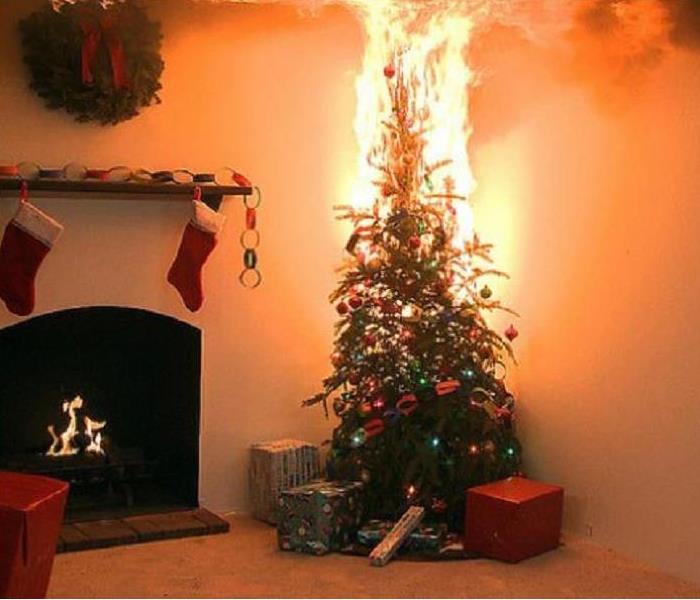 There are numerous precautions you can take to avoid winter season fires!
There are numerous precautions you can take to avoid winter season fires!
In any given year, winter is the most common time for residential fires. Not all of the common winter fire causes are specific to the season, but they are more common during cold weather and thus increase the chances for a fire to occur in your Ulster County home.
Why the Increase of Winter Fires?
More Cooking-
At any time of year, cooking errors are the No. 1 cause of residential fires in the country, but this increase in the wintertime. With more baking, holiday meals and group cooking and more people near flames, the chances are higher during the winter months, leading to an increased fire rate.
Home Heating-
Wood stoves, fireplaces and space heaters are all common forms of additional heating during cold weather, and as long as precautions are taken, they are generally safe. However, errors in heating are the second leading cause behind residential fires during the winter months, making safety features, smart thinking and supervision a crucial part of these methods.
Candles and Decorations-
Safety in decorating is not commonly discussed, but candles, holiday trees and wreaths and other decorations are another leading cause of residential wintertime fires. Candles are inherently hazardous due to the open flame—it can spread to surrounding areas quickly. Keep them at least 12 inches away from anything that could burn. For electronics, frayed wires and general overheating can pose a fire risk, so it is important to be cautious with those as well. A heat source close to a Christmas tree causes 1 out of 4 winter fires.
Prevention Tips for Wintertime Fires:
Understanding the common causes of winter fires is an important step in prevention. By going about these activities with a safety-focused mindset and keeping these tips in mind, you can help prevent any accidental fires from occurring this season:
- Check smoke alarms every 30 days and replace every 10 years. Have at least 1 alarm per floor!
- Always monitor open flames including fireplaces, cooking areas and candles.
- Select space heaters with automatic shut-offs in case they tip over. Do not run overnight or plug them into an extension cord.
- Utilize a screen every time you use a fireplace. Keep your holiday décor far from any open flame but especially Christmas trees.
- Create and practice an emergency escape plan with your household. Don’t forget about pets during this crucial time as well!
If you've suffered fire and smoke damage, call us right away. Our experienced professionals are here to help 24/7 and are faster to any size disaster. We’re leaders in restoration and can help you recover quickly after a fire occurs.
Fireplace Safety For Those Freezing Hudson Valley Nights!
11/20/2019 (Permalink)
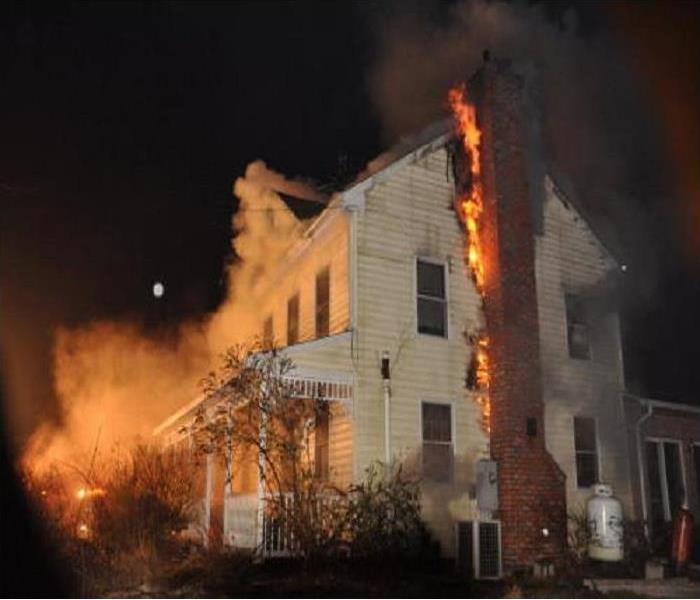 Take extra safety precautions when using a fireplace this winter!
Take extra safety precautions when using a fireplace this winter!
When the colder temperatures start to set in around Ulster County, many homeowners will turn to their fireplace, wood or pellet stoves for cozy comfort. Keep in mind the following precautions to help ensure a safe winter season:
Keep Your Chimney, Fireplace and Stoves Clean
- Have your chimney, fireplace, wood or pellet stove inspected and cleaned annually by a licensed chimney specialist for maximum efficiency and safety.
- Be sure to keep the area around them clear of debris, decorations and any other combustible materials.
- If you have a wood burning, insert or pellet stove, refer to the manufacturer’s instructions for additional instructions for operation and venting.
Keep Fires Burning Safely
- Be sure the flue is open before lighting your fire to help ensure the fireplace will vent properly. Do not close your damper until you are sure the fire is out.
- When starting a fire, only use a match or commercial firelighter. Never use flammable liquids to start a fire.
- Glass doors of a fireplace should be kept open while burning a fire. This allows the fire to receive enough air for complete combustion and to help reduce creosote build-up in the chimney.
- Metal mesh screens should remain closed whenever your fireplace is in use to help keep embers in the fireplace.
- Only use dry wood in your fireplace. Wet wood can increase creosote buildup, which can lead to chimney fires.
- Never burn anything but wood in the fireplace.
- Never leave a fire in a fireplace unattended. Before leaving the house or going to bed, you should make certain to fully extinguish the fire.
- Allow ashes to cool completely before disposing of them — ashes can take several days to cool completely. Never empty ashes directly into a trash can. Instead, place ashes in a covered metal container located at least 10 ft. away from your home and any other building.
Keep the Outside of Your Home and Your Chimney Safe
- Firewood should be stacked at least 30 feet away from your home.
- Your roof and chimney should be kept clean of leaves, pine needles and other debris. Keep a close eye on branches and limbs near the chimney and have them pruned as needed.
- Install a chimney cap with spark arrester to help keep debris, leaves, branches and animals out, and to help prevent embers or sparks from escaping and creating a fire hazard.
Keep the inside of your home safe with smoke and carbon monoxide detectors. We recommend that you take the time to test your smoke and carbon monoxide detectors monthly, and after you change the batteries to ensure they work properly. A smoke detector is the most effective way to get you and your family out safely. A carbon monoxide detector can alert you to the buildup of this dangerous odorless and colorless gas.
Should you ever suffer fire damage in your home or business, SERVPRO of Kingston/New Paltz is ready to help 24/7. Our professionals will work directly with your insurance company and make it “Like it never even happened.”
Choosing the Right Fire Restoration Company Should Be Part of Your Home Fire Plan
11/5/2019 (Permalink)
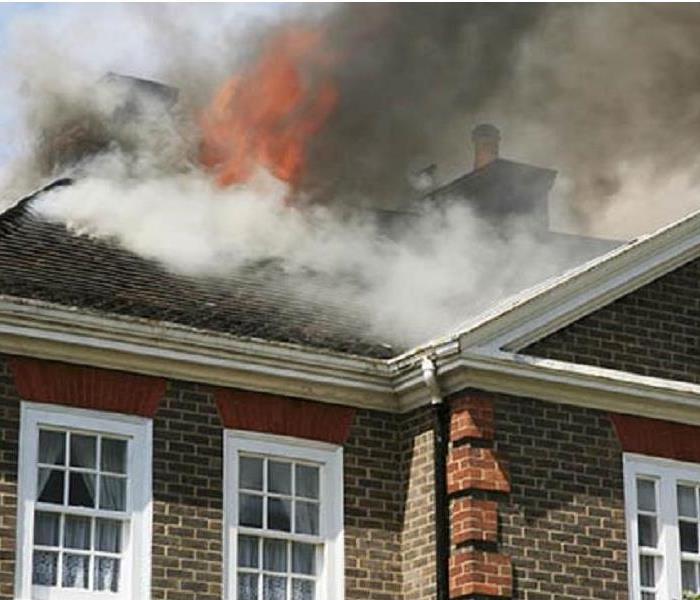 SERVPRO of Kingston/New Paltz is the first choice in fire damage restoration!
SERVPRO of Kingston/New Paltz is the first choice in fire damage restoration!
Homeowners should be especially careful during the winter months when it comes to fire prevention and having a solid emergency plan for the family. The highest number of home fires are in the winter, with December being the peak. Between holiday decorations, electrical issues, candles burning and space heaters running, the chances climb in the winter for sure.
Planning for a fire in advance is one of the best ways to keep yourself and your loved ones safe. A fire escape plan and emergency precautions are helpful in the moment, but knowing what to do afterwards is extremely valuable. That is where picking the right restoration company ahead of time comes into play.
What is Their Process of Fire Restoration?
When you pick your damage restoration company in advance, you want to be reassured that you can call them at any point and have them respond quickly. Not only does SERVPRO of Kingston/New Paltz guarantee that, but we also guarantee that we will send highly trained and highly experienced professionals to the scene who are well-versed in a variety of cleanup scenarios.
Although every fire damage is different, here are just a few of the ways we can help:
Step 1: Emergency Contact
The restoration process begins when you call us. Our representative will ask questions regarding the fire damage event that will help us respond immediately with the appropriate equipment and resources.
Step 2: Inspection and Fire Damage Assessment
We carefully inspect and test adjoining rooms of your property to determine the extent of the fire, smoke, and soot damage. This step is crucial to developing a plan of action.
Step 3: Immediate Board-Up and Roof-Tarp Service
Fire damage can often compromise windows, walls, and roofs. To maintain security and to protect against further damage, if needed, we can board up missing windows and walls and place tarps on damaged roofs.
Step 4: Water Removal and Drying (if water damage is present)
The water removal process begins almost immediately and removes the majority of the water. We then use dehumidifiers and air movers to remove the remaining water and complete the drying process.
Step 5: Removal of Smoke and Soot from All Surfaces
We use specialized equipment and techniques to remove smoke and soot from ceilings, walls, and other surfaces.
Step 6: Cleaning and Sanitizing
We clean, sanitize, and disinfect all of the restorable items and structures that were damaged by the fire utilizing a variety of cleaning techniques to restore your belongings to pre-fire condition. We’re also trained to remove odors using industrial air scrubbers and fogging equipment.
Step 7: Restoration
Restoration is the final step—getting your home back to its pre-fire condition. Restoration may involve minor repairs, such as replacing drywall, painting, and installing new carpet; or it may entail major repairs such as the reconstruction of various areas or rooms in a home or business.
If you’ve been affected by a fire, call us right away! We are here 24⁄7 to help you recover.
Do you know how to use a fire extinguisher and which type in your New Paltz home?
10/4/2019 (Permalink)
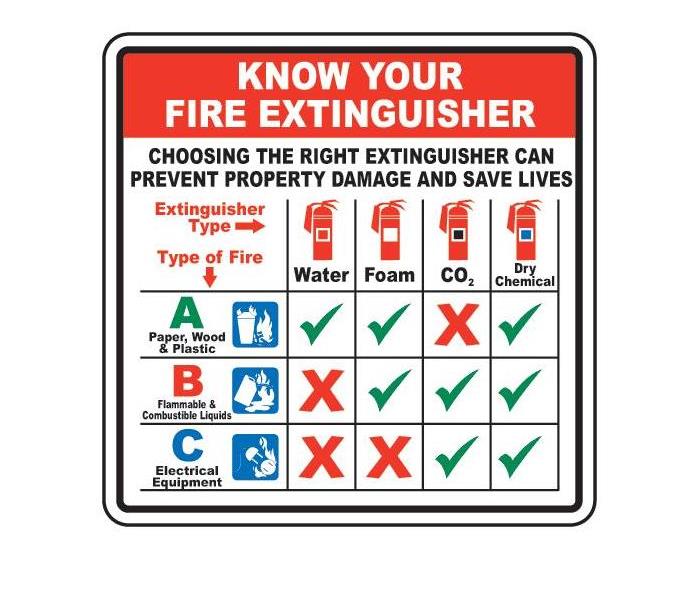 Be sure to know what type of fire extinguisher you have in your home and to learn the PASS System to use it before you have a fire!
Be sure to know what type of fire extinguisher you have in your home and to learn the PASS System to use it before you have a fire!
Sure, you probably have a fire extinguisher in your kitchen, maybe even one in the garage too. A fire extinguisher can really help put out a small fire before emergency personnel arrive at your Ulster County home and can help you exit your safely.
Keep in mind though, that not every extinguisher is for every type of fire, so what type do you get?
All household fire extinguishers have the top 3 classifications: A, B or C. Some models have a combination of all three extinguishers in one. Some models are for commercial use or industrial specifications, classified as D or K extinguishers.
-A is for ordinary combustibles like trash, wood and paper
-B is for liquids & grease (think more like stove-top fires)
-C is for electrical equipment
A good note to remember, according to the National Fire Protection Association, each floor of your home should have an extinguisher.
How do you use a fire extinguisher?
To use the extinguisher properly, you want to use the PASS method:
-Pull the pin. Hold the nozzle pointing away from you and release the locking mechanism.
-Aim low. Point the extinguisher at the base of the fire instead of at the flames themselves. Standing at least 6 feet away from the fire is important! Do not touch the plastic discharge horn on a CO2 extinguisher as it gets super cold and may damage your skin.
-Squeeze the lever slowly and evenly while keeping the extinguisher upright.
-Sweep the nozzle from side-to-side until the extinguisher runs dry.
Always read the instructions on the fire extinguisher and get familiar before a fire breaks out. Remember, extinguishers do have limitations so make sure you have the correct extinguisher for your home and type of fire. Do not assume anything when it comes to fires!
Whenever you use an extinguisher, whether you ran it dry or used it briefly, it's important to replace it or refill it right away. This is also the rule for any gauge that goes down to the red zone over time.
SERVPRO of Kingston/New Paltz has the trained experts in the industry of fire damage remediation. If you experience fire damage in your home, don't hesitate to call us, 24/7 for emergencies. We’re here to help and will make it Like it never even happened.
Before, During and After a Fire....Do you know what to do at your New Paltz home?
10/1/2019 (Permalink)
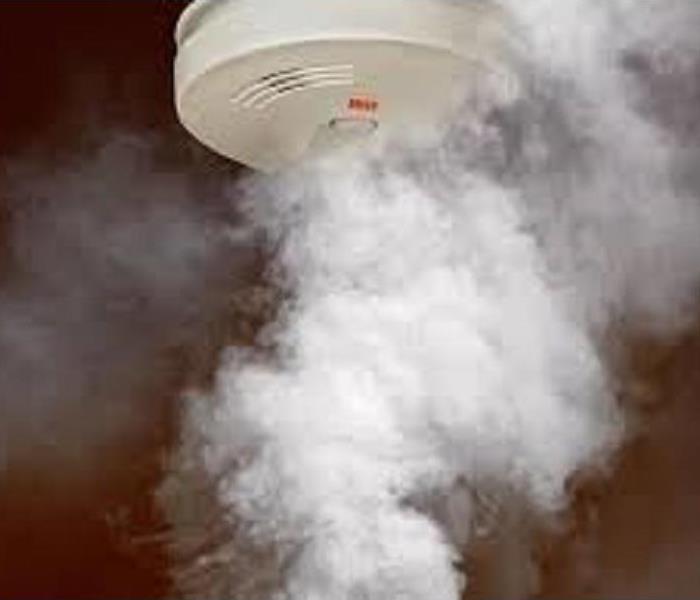 There's a lot to think about when a home fire occurs, we've made an easy list for you to follow for before, during and after.
There's a lot to think about when a home fire occurs, we've made an easy list for you to follow for before, during and after.
Do you know what to do in the event of a house fire? Of course, we all hope a fire will never happen to us, but the reality is that there are an estimated 358,500 home fires occur every year . Though they are always alarming situations, planning ahead can go a long way in helping you feel safe and prepared. While practicing general fire safety is best, knowing what to do at every stage is also essential for keeping you and your family safe.
We’ve compiled resources from the National Fire Protection Association and Ready.gov, we’ve assembled a complete overview of preparedness, safety precautions and actions to take after the flames subside:
Before a Fire:
-Install smoke alarms in each bedroom and on each floor of the home, and be sure to check them once per year at least.
-Ensure the house number is visible from the road and/or on a mailbox for emergency responders to easily see.
-Identify two ways out of each room and create a drawing of the floor plan reflecting escape routes. Review this with every member of your family.
-Agree on an outdoor meeting place for the whole family, such as a neighbor’s mailbox or a visible landmark far from harm.
-Alert any visitors or overnight guests to the plan should an emergency occur.
-If you have young children or family members who have limited mobility, assign them to a “buddy” who can make sure they get out safely. This should always include family pets.
-Make sure all escape routes are free of clutter and easily accessible for all family members. Check on potential obstacles like door locks that might stick or windows that can be an issue for evacuating.
-Take photos of all rooms in your home for when you might need to file an insurance claim.
During a Fire:
-Call 911 as soon as you are able.
-Smoke rises, stay low to the ground to avoid inhalation as much as possible.
-Always feel the door and doorknob for heat to determine if a route is safe (that’s why 2 ways out is so important).
-Open doors with extreme caution in case the fire is just beyond.
-If your clothes catch fire, remember to stop, drop and roll right away.
After a Fire:
-Contact The Red Cross or other local emergency relief service, they have numerous resources to assist in home fires and other emergencies.
-Call your insurance company and a restoration company that is certified is fire and smoke damage restoration.
-Do not go back in the home until the fire department has told you it is safe to. Make sure you have a professional reconnect utilities like electric and gas.
-Take an inventory of all damaged items, as best as you can before cleanup begins. The photos taken before hand will come in handy here, it’s impossible to remember everything you own in a crisis like a house fire.
-Save any receipts for any expenditures accrued due to the fire to submit to your insurance company.
If your home has been damaged in a fire, don’t hesitate to reach out to us 24/7! We are fully certified in fire damage restoration and will respond quickly to damages. We’re here to help and will make a stressful situation "Like it never even happened."
Smart fire prevention tips for your New Paltz, Kingston, Saugerties and Highland homes
8/20/2019 (Permalink)
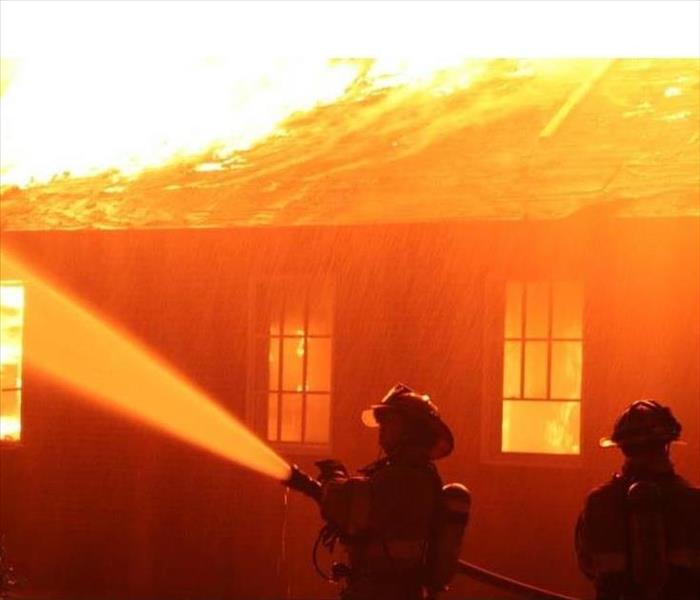 Fire Prevention Plans can offer security and peace of mind.
Fire Prevention Plans can offer security and peace of mind.
Not only can damage from residential fires can be significant, they cause both structural and property damage and put the household in danger. Practicing proper fire prevention techniques in your Ulster County home is essential to staying safe and helps offer a piece of mind.
Residential Fire Numbers: Many consider fires to be an uncommon occurrence, but according to according to FEMA, in 2017 there were over 3,400 fatalities attributed to fires, with 23.0 billion dollars’ worth of losses from over 1.3 million fires that year.
Over half of residential fires are caused by cooking in some manner. Utilizing caution when cooking with open flames can go a long way in residential fire prevention. Make sure children and adults all know how to be safe in the kitchen, what to do in a fire emergency and what to USE should one arise.
Fire Prevention: Because of how quickly fires can grow, preventing them from starting is the most effective method of fire safety. Household objects can quickly turn hazardous if conditions are right, but there are many ways to prevent fire hazards.
Inspection of the smoke detector: Use the smoke detector’s test button to check the batteries once each month. Purchase a new one every 10 years. They’re not expensive and the technology has been upgraded since your last one.
Dryer vents and lint: Have your dryer vent cleaned once a year. An excessive amount of lint can be a fire hazard due to the heat of the dryer. Dispose of dryer lint in the tray after each load as a cautionary measure.
Stay in the kitchen if you’re cooking with an open flame: Just because one uses a flame each day for cooking or fireplaces does not mean that it cannot pose a hazard. Always attend to open flames and never leave the room when one is burning.
Cords, cable and wires: Cords come with a safety coating that protects the wires and lessens the fire risk. When the cables become frayed and worn, the wires become exposed and create a threat. Check cables often and dispose of frayed ones immediately.
Properly store products. Everyday household products can also pose a fire risk. Most cleaners, household chemicals and aerosol cans should be kept away from high heat and incendiary devices. Check their labels to determine the safest way to store them.
If your Ulster County home has suffered damage from a fire, give us a call. We are certified in fire and soot remediation, and here to help 24/7.
Still noticing that smell in your Ulster County home from that grease fire 3 weeks ago?
7/25/2019 (Permalink)
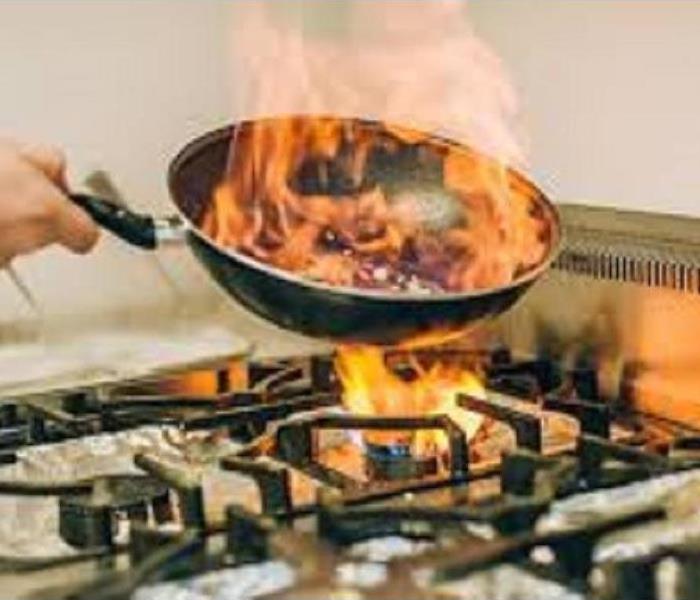 Fires caused by burned protein can get into more places than you think!
Fires caused by burned protein can get into more places than you think!
You thought you got the grease and melted things cleaned up when it happened, but there are some little-known facts about food fires that make the smell and potential damage tricky get rid of.
Protein fires usually start from food that is burnt in the kitchen. Think about cooking pan on the stovetop and the grease has caught fire and created a significant problem. Due to the chemical makeup and structure of food proteins, it can make an especially unique restoration challenge and create odor issues that are difficult to mitigate when they burn.
Important things to know regarding protein/food fires:
*Generally, these types of fires leave little visible residue, often confusing to someone who isn’t trained locate and get rid of. The smell is there but hard to pinpoint where it could be coming from.
*They create a significantly more distasteful smell than most other fires. Pungent, noxious, thick and sometimes can cause irritation to sensitive people.
*The nature of the burn causes odor to permeate even more completely than other fires, into everything. Items or belongings you never thought would’ve been affected could have some lingering and unforeseen issues. Sometimes the damage can require a sealing agent or even repainting to completely eradicate the odor. Often, it’s recommended to let a damage restoration company take care of getting the smell out of everything, usually that gives the best results.
*Keep in mind that the damage may require multiple attempts and methods to achieve the best results. Using a certified remediation company can decrease the attempts as they are effective and efficient.
Don’t tackle this issue by yourself, let the trained and certified experts at SERVPRO of Kingston/New Paltz take care of it. There is no damage too small or large and with over 25 years of LOCAL experience, we can tell you that When fire and odors take control of your life, we’ll help take it back!.
Summer Grilling Fire Hazards and Tips to Avoid Them | SERVPRO® of Kingston/New Paltz
7/1/2019 (Permalink)
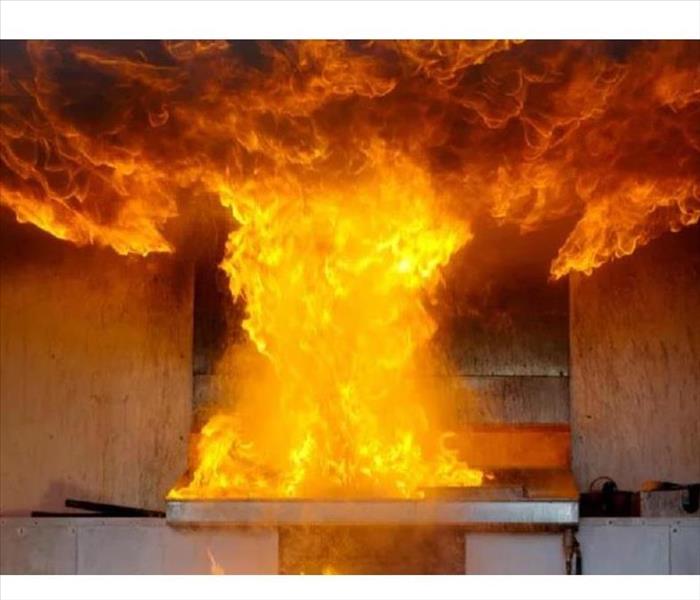 Be prepared with these grilling safety tips to help avoid a dangerous situation.
Be prepared with these grilling safety tips to help avoid a dangerous situation.
It’s important to be aware of what conditions can cause a grill fire—and how to prevent one—so you can stay safe while having summer fun in Ulster County.
Grill fires are not only dangerous to people and animals, they can cause serious damage to your deck and home. In fact, the National Fire Protection Association reports that grills were involved in over 10,000 home fires in a four-year span, with July being the most popular time for these incidents. May, June and August were all a close tie in those scary statistics.
What Causes Grill Fires?
While there is a fire risk anytime someone is cooking either indoors or out, because of the open flame and direct contact, grills pose a unique risk for flare-ups. Common causes of grill fires include:
*Leaving grills unattended
*Uncleaned grill grates
*Grilling near combustible materials- heat can really radiate, you’d be surprised how far!
*Burner tubes blocked due to debris or insects
*Overfilled grease pans
How to Prevent Grill Fires
The easiest way to avoid accumulating damage from a grill fire is by being familiar with and taking steps to prevent one from happening in the first place.
Here are a few ways you can care for your grill and prevent fires:
- It’s easy to forget they’re in there but you need to clean your drip pans frequently. Cleaning your grill helps prevent grease fires and flare-ups. Under the cooking grids and burners, every grill is equipped with a drip tray. When these trays become full and reach high temperatures, grease fires can occur. Check your pans or trays every time you use the grill to ensure they are not getting overfilled. If you let the grease cool, it’s easier to scrape off and then clean with soap and water.
- Coated, sauced, gristle-covered cooking grates need to be scraped down. These dried-on bits harbor bacteria that can affect the taste and outcome of your meal, but they can also cause dangerous fires. After preheating your grill, use a grill brush to scrape off grates—and scrape again after cooking. It is also advised to frequently give grates a scrub with soap and water while the grill is cool. There are lots of great choices of grill scrapers out there no matter what type you like, it’s an important tool to have on hand whenever you’re grilling!
- ALWAYS Keep safety supplies nearby. Baking soda quickly cuts off oxygen the fire needs. Keep baking soda and a fire extinguisher nearby each time you grill to smother any flames.
Tip: Never use water to put out a grease fire, as it can cause the flames to spread.
SERVPRO of Kingston/New Paltz is here to help, 24/7 for emergencies! N matter the type of fire damage, we’ll make it “Like it never even happened.”
Check and test your smoke detectors regularly in your New Paltz home
6/13/2019 (Permalink)
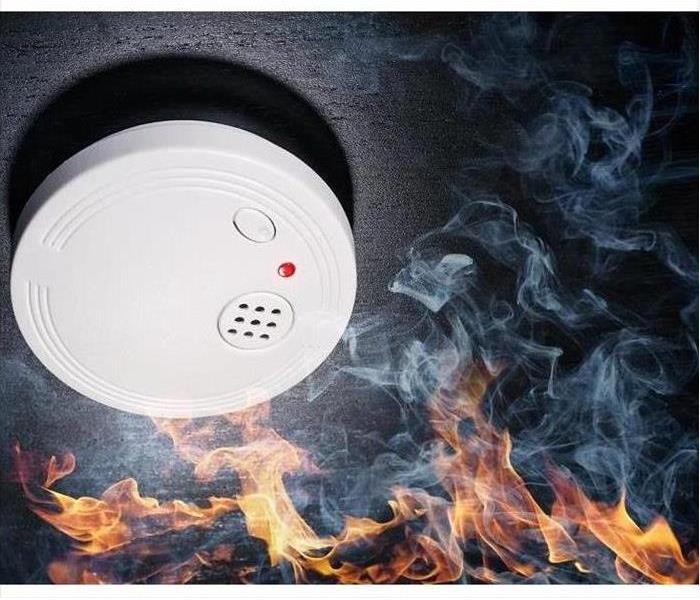 A disabled or malfunctioning smoke detector can put your family at risk.
A disabled or malfunctioning smoke detector can put your family at risk.
According to the National Fire Protection Association (NFPA), approximately 3 out of 5 fire deaths in a home are due to either non-working smoke alarms or no smoke alarms. About half of the fires that had smoke alarms installed did not work due to missing batteries or disconnected wiring. Properly installed and working smoke alarms in your Kingston home can give you and your loved ones extra time so everyone can get out quickly.
A good rule of thumb is to have smoke detectors outside every sleeping area, inside every bedroom, and one on each level, including the basement. You can’t be too safe, so if your home is larger, install extra ones.
Test your smoke alarms once a month, check the batteries, check the wiring. If it starts chirping, the batteries need to be replaced. If you have one that has non-replaceable batteries, the entire unit will have to be replaced every 10 years. Read and understand the manufacturers specific instructions as some units need new batteries every year and some do not.
Never disable a smoke detector for any reason, you might think you’ll remember to replace the batteries tomorrow or buy a new one before there’s a fire, but it’s a very risky chance to take. Contact your local fire department if you need help or more information.
When life takes a turn and you suffer fire, smoke or water damage, SERVPRO of Kingston/New Paltz is here for you, ready to help no matter what. Program our number into your phone, Google us too, we’ll help make any disaster “Like it never even happened.”
Grilling safety 101 at your Kingston/New Paltz barbecue
5/22/2019 (Permalink)
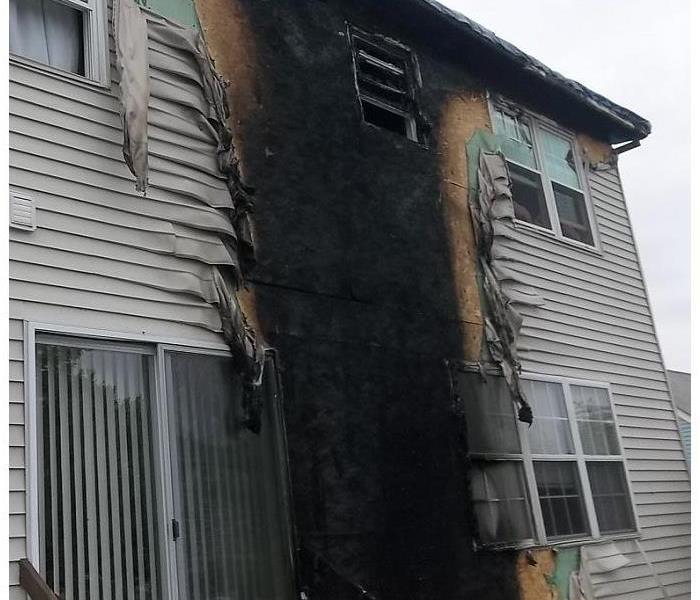 Keep yourself and the family in the know about grilling safety this Ulster County barbecue season!
Keep yourself and the family in the know about grilling safety this Ulster County barbecue season!
The weather is getting warmer, the Hudson Valley is finally getting breaks from this incessant rain and more people are using their grills….and the incidences of grill-caused fires goes up.
Outdoor grilling causes an average of 8,900 home fires, according to the National Fire Protection Association. The association adds that gas grills cause more home fires than charcoal grills as most of the public, about 64% of households, owns gas grills.
No matter the type of grill you own, here are some important BBQ safety tips that will keep you and your home safe for barbecuing season:
-Check for propane leaks on your gas grill. You can try a soap and water solution on the hose to check for leaks when the gas is on (it will bubble where the leak is), or you might smell gas near the barbecue or you might have a flame that just won’t light.
-Grill away from any structures. Gas and charcoal grills are made for outdoor use only but more than 25% of home fires start on a balcony or open porch. Even when you’re done cooking, a grill is still a fire hazard, don’t relocate the grill near your home. Never leave your grill unattended and don’t try to move it when it’s hot or still lit. A grill will stay hot for at least an hour after use.
-Take care with charcoal starter fluid, if you use a charcoal grill, only use charcoal starter fluid. If the fire starts to go out, don’t add any starter fluid or any other flammable liquids to the fire.
-Keep your grill on a stable, flat surface and make sure it can’t be tipped over.
-If the flame goes out on your gas grill, turn everything off, wait 5 minutes and re-light it.
-Keep your grill clean. Remove grease or fat build-up often.
-Always keep baking soda and a fire extinguisher nearby for emergencies. Baking soda will help control a grease fire, never use water to put out a grease fire.
Accidents happen, but it's smart to know about grilling safety ahead of time to help decrease the chances of a fire. SERVPRO of Kingston/New Paltz is here for your emergency 24/7.
Let us relieve the stress of fire, water and smoke damage in your Kingston/New Paltz home or business!
4/25/2019 (Permalink)
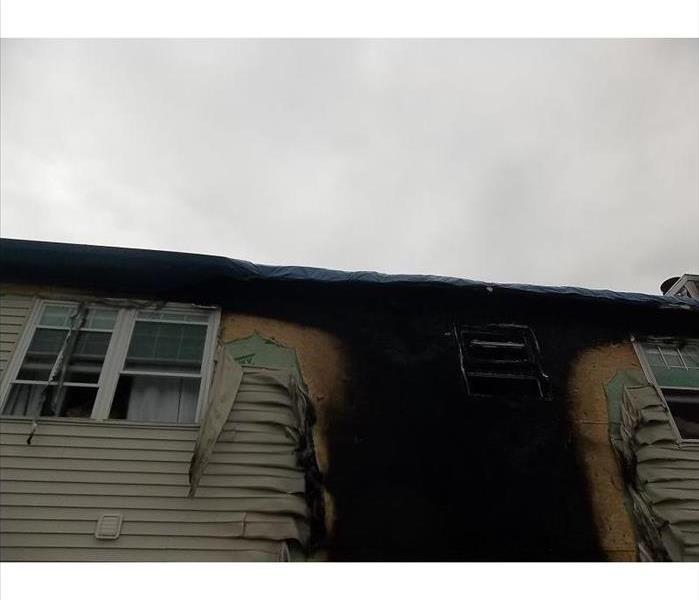 This fire damage from a malfunctioning barbecque is a huge headache that our company is trained to take care of for you!
This fire damage from a malfunctioning barbecque is a huge headache that our company is trained to take care of for you!
Navigating what to do when you're dealing with a fire requires a whole set of things to take care of that you probably haven’t given much thought to before at your Kingston/New Paltz property.
We’re here to help you every step of the way in terms of what to do and not to do in case of a fire. Once the firemen have deemed it safe to go in (in some cases they won’t), here are some important things to consider in this situation:
-DO NOT attempt to consume food or beverages that have been stored close to fire, heat or water. They could be contaminated. It is recommended to empty the fridge and freezer, it's likely the electric isn't even on at this time.
-DO NOT keep walking around inside the property. Keep your movements limited to help prevent soot particles from getting embedded into upholstery and carpet. Keep your hands clean to avoid further soiling.
-DO NOT turn on ceiling fixtures, they could’ve gotten wet or damaged and could cause electrical shock. In most cases, the electric has been turned off anyway as to not be a danger for the firefighters.
-DO NOT attempt to clean carpets, garments, electrical appliances, walls or painted surfaces BEFORE contacting SERVPRO of Kingston/New Paltz professionals. Our teams are trained and certified with most innovative equipment and most effective methods of cleaning smoke and soot from everything in your home, including electronics, paperwork, photos and artwork. Let our experts take care of the hard part, it’s one less thing for you to have to consider in a time like this.
Take a look at some of our work HERE.
SERVPRO of Kingston/New Paltz will work directly with your insurance company to help get your home and life back the best way possible. You’ll be amazed at how clean, fresh and back to normal your property or business will be using the experts from SERVPRO of Kingston/New Paltz.
More useful tips to help prevent fire hazards!
12/4/2018 (Permalink)
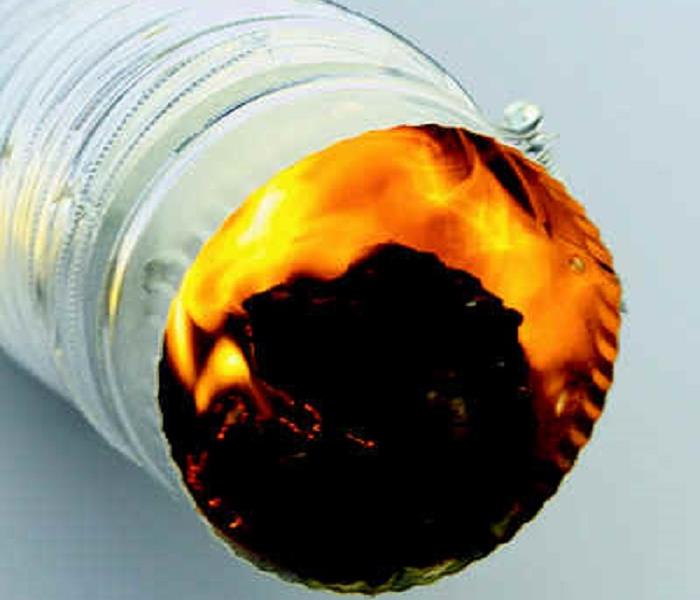 Follow some easy steps to help prevent this scary situation.
Follow some easy steps to help prevent this scary situation.
Protect your clothes—and possibly a whole lot more—with these simple maintenance tips:
Not taking care of your dryer causes several issues, starting with longer drying times, which can lead to shrunken clothes and heat-damaged fabrics. It can also drive up your utility bills, since the dryer is one of the more energy-intensive appliances in the home.
Another symptom of poor dryer maintenance: your dryer's automatic cycles could start to be less accurate, resulting in laundry that's either damp or dried to a crisp.
Last but certainly not least, a neglected dryer poses a serious fire hazard. In fact, some 7,000 fires, 200 injuries, and 10 deaths are attributed each year to dryer fires, according to estimates by the Consumer Product Safety Commission. Not cleaning the dyer is the leading cause of the blazes.
Here’s how to get peak performance, efficiency, and safety out of your clothes dryer in a few simples steps.
Step 1: Empty the Lint Screen
This needs to happen every time you use the dryer. Not every week or every so often—every single time. If you allow too much lint to build up on the screen, heated dryer air won’t move freely through the machine, which will prolong drying times.
Step 2: Clean the Dryer Vent
Even if you’re diligent about emptying the lint screen, small fibers will get through the trap and into your dryer vent. Left unchecked, this lint can slowly snowball, to the point where an errant spark could lead to a serious conflagration inside the dryer vent. That’s why it’s critical to clean the dryer vent every few months or so, depending on how often you use the dryer and the types of laundry you dry.
It’s a pretty simple task, assuming you can access the dryer vent by pulling the dryer away from the wall (if not, you’ll need to hire a professional). Always disconnect the dryer from its main power source at your home's electric panel. Then separate the vent from the dryer and vacuum both ends using the crevice attachment of your vacuum.
A few years ago, we tested the Lint Lizard, a device that can be attached to the end of your vacuum. It was extremely effective at sucking up dryer lint, so it might be worth the $10 investment. Just note the Lint Lizard’s sharp point could harm flexible dryer ducts made of foil or plastic. That being said, we strongly recommend metal dryer ducts, because they don't sag, making lint less likely to build up. Also, if a fire does start, a metal dryer vent is more likely to contain it than one made of plastic or foil.
Step 3: Clean the Moisture Sensors
Our top-rated dryers all have moisture sensors that work in conjunction with auto-dry cycles to detect the laundry’s dampness and shut off the machine when clothes are dry. Over time, these sensors can get covered with film, especially if you use dryer sheets. The buildup can prevent the dryer from knowing when the laundry is dry, leaving them either damp or overcooked.
To counter this problem, clean the sensors with a cotton ball and rubbing alcohol every few months, or any time the auto-dry cycles seem to be missing the mark. The sensors are usually located just inside the dryer, underneath the door. Look for thin metal bars, about 6 inches long, with a slight curve that follows the contour of the door. If you don't see the sensors there, check your owner's manual for their location.
Be diligent and avoid fire hazards! If you have experience fire and/or water damage in your home or business, call SERVPRO of Kingston/new Paltz to alleviate the burden of restoration, 845-255-4334.
(reference: Consumer Reports, How to Clean Your Dryer Vent and Other Quick Tips, https://www.consumerreports.org/clothes-dryers/how-to-clean-your-dryer-vent/)
Why you should consider a fire extinguisher in your Kingston/New Paltz home
11/2/2018 (Permalink)
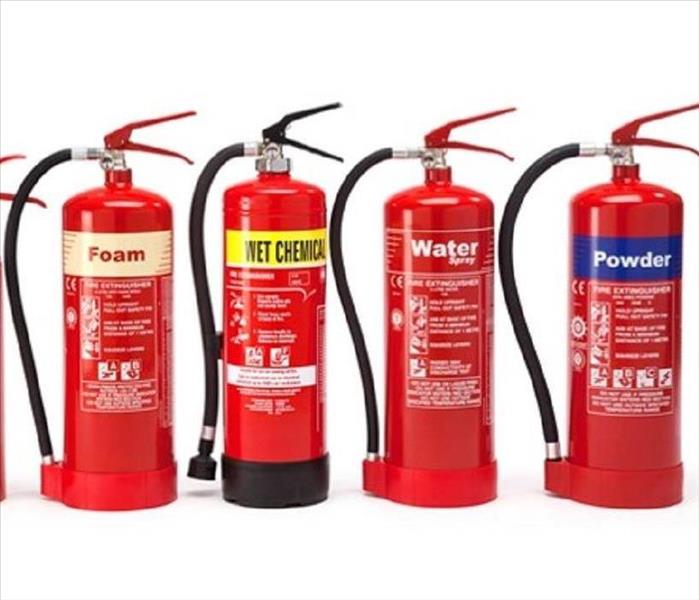 At least one fire extinguisher per floor is recommended!
At least one fire extinguisher per floor is recommended!
Fire extinguishers can save your life! They can put out a fire before emergency personnel arrive or they can help you exit your home safely.
What type do you get?
All household fire extinguishers have 3 classifications: A, B or C. Some models have a combination of all three extinguishers in one.
- "A" is for ordinary combustibles like trash, wood and paper
- "B" is for liquids & grease (more stove top fires)
- "C" is for electrical equipment
According to the National Fire Protection Association, each floor of your home should have an extinguisher.
How do you use a fire extinguisher?
To use the extinguisher properly, you want to use the PASS method:
- Pull the pin. Hold the nozzle pointing away from you and release the locking mechanism.
- Aim low. Point the extinguisher at the base of the fire instead of at the flames themselves. Standing at least 6 feet away from the fire is important!
- Squeeze the lever slowly and evenly while keeping the extinguisher upright.
- Sweep the nozzle from side-to-side until the extinguisher runs dry.
Read the instructions on the fire extinguisher and become familiar with them before a fire breaks out. Remember, extinguishers do have limitations so make sure you have the correct extinguisher for your home.
Whenever you use an extinguisher, whether you ran it dry or used it briefly, it's important to replace it or refill it right away. This is also the rule for any gauge that goes down to the red zone over time.
Even though you take precautions against fire damages, they can still sometimes occur. If you experience a fire damage in your home, don't hesitate to contact SERVPRO of Kingston/New Paltz at 845-255-4334 to help make this disaster "Like it never even happened."
What to do and what NOT to do in case of fire damage in your Kingston/New Paltz home
11/2/2018 (Permalink)
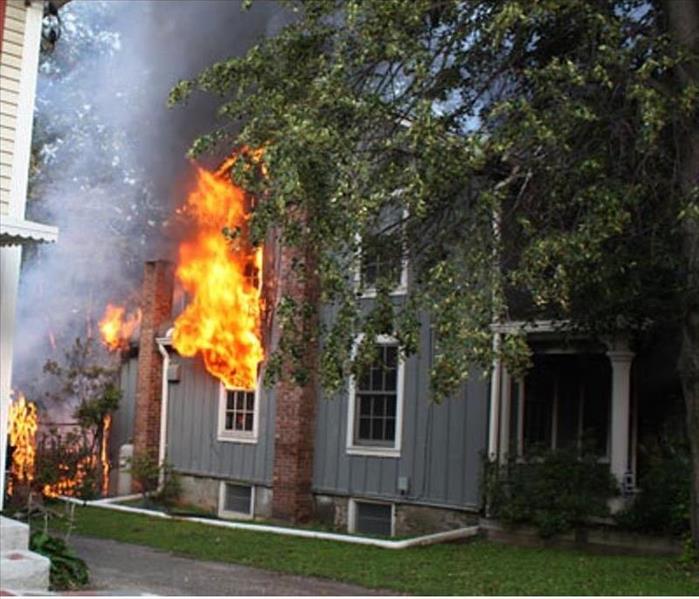 It's important to know what to do and what not to do in case of a fire.
It's important to know what to do and what not to do in case of a fire.
Fire Damage Tips- What to do before help arrives
What to do until help arrives, after you've had a fire.
After any fire damage situation, your primary focus should be safety first:
- Is it safe to stay in the house?
- Electrical and "slip and fall" hazards are some of the most prevalent concerns.
- Only do activities that are safe for you to perform.
- Wet materials can be VERY heavy. Be careful!
Have Smoke or Fire Damage? Call 845-255-4334
What To Do After A Fire
- Limit movement in the home to prevent soot particles from being embedded into upholstery and carpets.
- Keep hands clean so as not to further soil upholstery, walls and woodwork.
- Place clean towels or old linens on rugs, upholstery and carpet traffic areas.
- If electricity is off, empty freezer and refrigerator and prop doors open.
- Clean and protect chrome with light coating of petroleum jelly or oil.
- Wash houseplants on both sides of leaves.
- Tape double layers of cheesecloth over air registers.
What NOT To Do After A Fire
- Don't attempt to wash any walls or painted surfaces or shampoo carpet or upholstery without contacting us.
- Don't attempt to clean any electrical appliances that may have been close to fire, heat or water without consulting an authorized repair service.
- Don't use any canned or packaged food or beverages that may have been stored near the fire, heat or water.
- Don't turn on ceiling fixtures if ceiling is wet. The wiring may be damaged.
- Don't send garments to an ordinary dry cleaner. Improper cleaning may set smoke odor.
SERVPRO of Kingston/New Paltz is available 24/7 to provide emergency fire services, board-up services & reconstruction services to help make your damage "Like it never even happened."
How to prevent Dryer Fires in your Kingston/New Paltz home
10/24/2018 (Permalink)
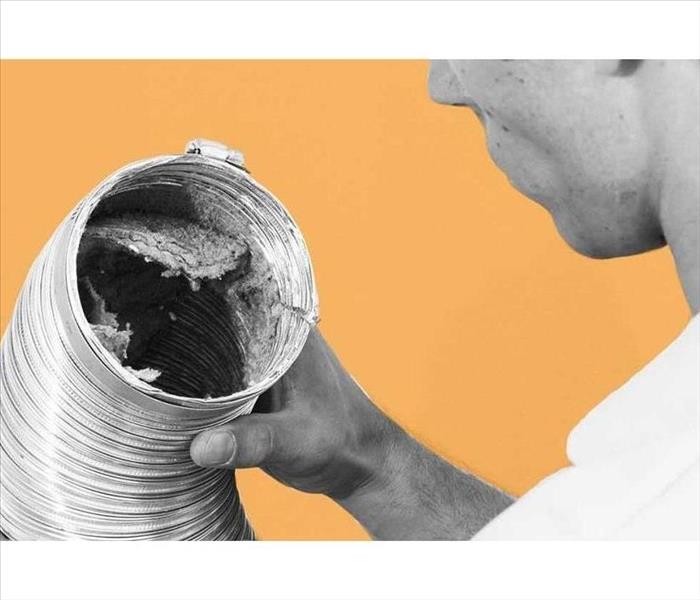 An accumulation of lint can lead to a dangerous situation.
An accumulation of lint can lead to a dangerous situation.
According to Consumer Reports (2018), every year firefighters across the country respond to around 14,630 home fires caused by clothes dryers, according to the National Fire Protection Association.
One-third of these fires is caused by an accumulation of lint, which means that not cleaning out your dryer vent can set you up for a dangerous situation that's far more serious than the drop in performance caused by constricting a dryer's duct work.
Take a look at these 4 simple best practices to ensure safety in the laundry room:
- CLEAN THE LINT FILTER AFTER EVERY LOAD- not only will this help prevent a fire, but your clothes will dry faster!
- REPLACE ACCORDION-STYLE DUCTS-If you see a plastic or foil accordion-style duct connecting your appliance to the vent, it’s a good idea to replace it with a rigid metal duct that won't sag and collect lint.
- CLEAN THE DRYER DUCT ANNUALLY- (at least)-Disconnect the duct from the dryer, and vacuum both the dryer and the duct—as much as you can access, then reassemble, return dryer to original spot and reconnect power.
- HANDLE CHEMICAL STAINS WITH CARE-Clothes stained with gas, cooking oil, cleaning agents, or other flammable chemicals or substances need special care. It's recommended to wash such stained clothing more than once to minimize volatile chemicals, then hang to dry. If you must use a dryer, use the lowest heat setting and a drying cycle that concludes with a cool-down period.
IMPORTANT: In the event that a fire does start, keep the dryer door closed to limit its oxygen supply—a fire needs oxygen to keep it going.
If your family has experienced a fire of any kind and needs help restoring your home, SERVPRO® of Kingston/New Paltz can help 24/7! Give us call at 845-831-3600 to learn about our fire restoration services. "Like it never even happened."
Reference: Consumer Reports- How to Prevent Dryer Fires: https://www.consumerreports.org/clothes-dryer/how-to-prevent-dryer-fires/
What You Can Do Safely Before Fire Restoration Help Arrives | SERVPRO® of Kingston/New Paltz
10/24/2018 (Permalink)
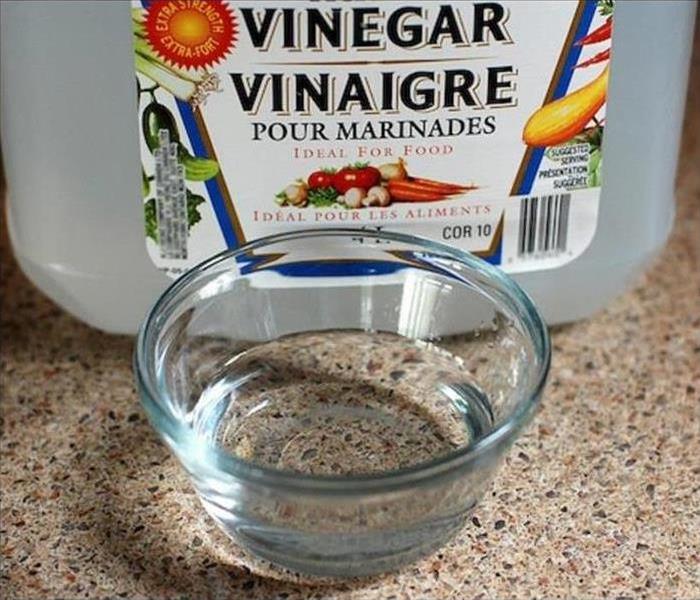 Call 845-255-4334 for help with fire damage today!
Call 845-255-4334 for help with fire damage today!
Learning that you’ve been affected by a home fire is a devastating feeling. The good news is, much of the damage can be mitigated through restoration if you hire a professional.
Not only will a professional work with your homeowner’s insurance company on your behalf, but they will also be able to salvage more items in the cleanup. However, it’s natural to want to do what you can to get started as you’re waiting for help to arrive.
While some things should always be left to the professionals, there are a few things you can do while you wait. If you’d like to start on fire restoration ASAP, here are three things you can safely do:
Starting laundry right away is a great way to help the cleanup process, as most things will have to be washed several times. As long as your machines have not been affected, washing any clothing, bedding or other machine washable materials with an alkaline cleaner or vinegar solution is a great place to start. Leave delicate fabrics, upholstery and curtains to professional care.
If weather allows, reduce the smoky smell by opening windows and doors, and let them remain open as long as possible. While the restoration team will bring industrial-grade equipment to aid this process once they arrive, this is a small step you can take toward helping the process along.
Non-porous surfaces—such as tile and countertops—can benefit from a scrub with soap and water to cut through the outermost layer of grime. A mild dish soap or alkaline cleaner will get you started, but let the professionals handle the usage of anything more heavy-duty. Cleaning improperly can result in more severe and possibly permanent damage to your surfaces, so anything you’re unsure about should be left to the pros.
In the event of a house fire, SERVPRO® has a team of trained professionals that can help your life get back to normal, faster. Like it never even happened.
3 Things to Do Before Fire Restoration Help Arrives | SERVPRO® of Kingston/New Paltz
7/12/2018 (Permalink)
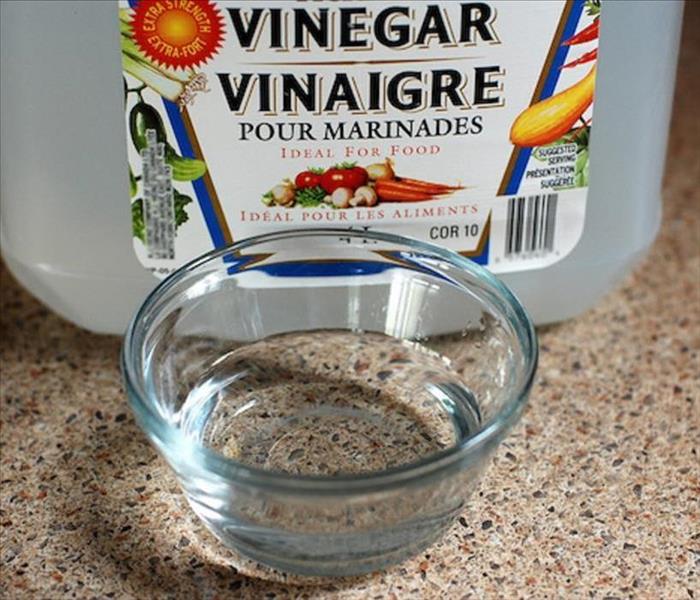 Call 845-831-3600 for your fire damage clean up!
Call 845-831-3600 for your fire damage clean up!
Being affected by a home fire can be debilitating. While damage from fires can often be mitigated with restoration, as you begin the cleanup process, it’s important to always hire a professional to properly handle the damage.
Calling a professional has many benefits, including preventing the hassle of working with your homeowner’s insurance and helping your home to be restored faster. However, while you’re waiting for help to arrive, it’s natural to want to do what you can to get started.
While some things should absolutely be left to the professionals, there are processes you can begin on your own to get your life back to normal even faster. If you find yourself ready to get started on fire restoration ASAP, here are three tasks you can safely do:
Giving cabinets, countertops and any other solid surfaces a preliminary scrub with soap and water will cut through the initial layer of grime. It’s best to use a mild dish soap or alkaline cleaner to begin, and let the professionals handle the usage of anything more heavy-duty. Cleaning improperly can result in more severe and even permanent damaging to your surfaces, so do not start in on anything you’re unsure about.
If weather permits, air out the house as much as possible. Open windows and doors to begin to let the smoke smell dissipate, and leave them open as long as you are able. While the restoration team will bring industrial-grade equipment to air out the home once they arrive, this is a small step you can take toward helping the process along.
If your washer and dryer have not been affected by the fire, starting laundry right away is a great way to help the cleanup process as most items will need to be washed several times. Any bedding, clothing or other machine washable materials should be washed with an alkaline cleaner or vinegar solution, but delicate fabrics, upholstery and curtains should be left in professional care.
If you need help with fire restoration, SERVPRO®’s team of professionals can get you the help you need right away!
3 Reasons Not to Clean Up Soot Yourself | SERVPRO® of Kingston/New Paltz
6/25/2018 (Permalink)
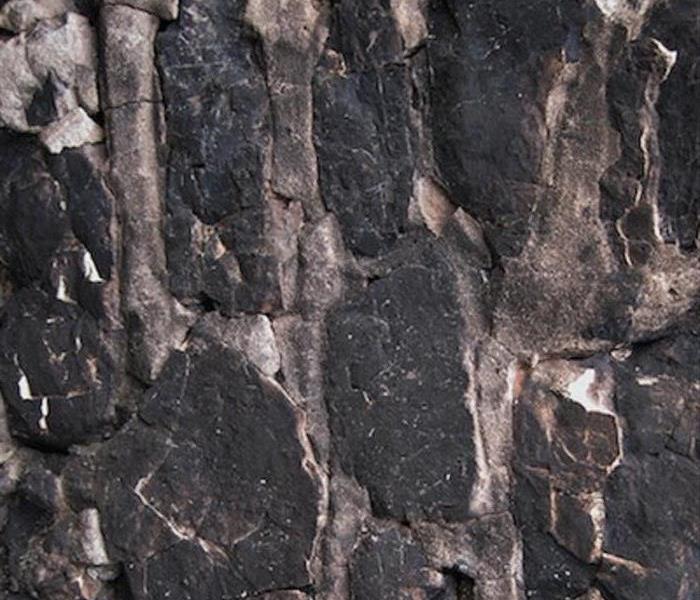 Call 845-255-4334 and have SERVPRO help with your soot cleaning today!
Call 845-255-4334 and have SERVPRO help with your soot cleaning today!
From revamping the kitchen to installing a new appliance, DIY home improvements make great weekend projects for the entire household. However, not everything can be tackled on your own, even for the handiest of homeowners.
If you’ve been affected by a fire, it can be tempting to immediately start the restoration process, but this hasty procedure can often hurt more than it helps. Many people don’t understand the nuances that go into soot removal. That’s why we’ve listed three reasons it should not be a DIY project:
1. Soot Won’t Stay Put. Because soot goes airborne, it doesn’t remain contained to the area the fire originated in. Soot travels into crevices, nestles on ceilings and even infiltrate your HVAC system. Additionally, absorbent things such as fabrics, carpets or upholstery are a soot magnet. While it might be tempting to launder these items and scrub down the walls right away, improper cleaning can actually lead to ruining your belongings beyond repair.
2. Soot Composition Can Vary. Because every fire is different, soot can vary greatly in its composition. While some soot has a powdery texture, others can be thick and viscous. Appearances can be deceiving, and it’s impossible to know what type of soot you’re dealing with before you interact with it. Tackling soot without knowing what type is on your hands means you run the risk of spreading it further—leading to more costly damage to your valuable home.
3. Soot Can Contain Toxic Chemicals. Fires require chemicals to stay active, and all of those chemicals are contained in soot. Carbon dioxide, oxygen and nitrogen are big factors, but there are also chemicals released from every material that was affected by the flames. Materials such as plastics, textiles and paint can be extremely toxic once heated, and improper soot cleaning causes these toxins to be re-released into the air.
If you’ve been affected by a fire, don’t risk a DIY disaster. SERVPRO® of Kingston/New Paltz has a fire restoration team that can get your life back to normal, faster.
Reconstruction Services Now Being Offered!
5/2/2017 (Permalink)
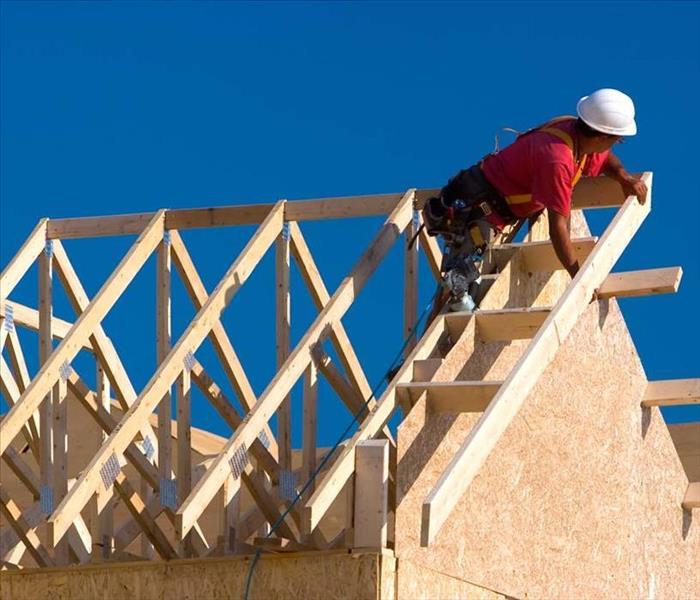 SERVPRO will take your damage and help make it "Like it never even happened".
SERVPRO will take your damage and help make it "Like it never even happened".
We are now a one-stop shop!
SERVPRO of Kingston/New Paltz is now offering reconstruction services for all mitigation damages! No longer do you need to find someone else to perform your restoration portion of the water, mold or fire damage! After we come in and perform the cleanup services, we can smoothly transition into the reconstruction services to help restore your home or office back to preloss condition!
With our new Reconstruction division, lead by Michael Scardaci, we are excited to offer the following services during the reconstruction process:
- Structural repairs
- Electrical
- Plumbing
- HVAC
- Windows/Doors
- Interior Design
- Flooring Replacement (all types)
- Ceilings
- Roofing
- Drywall
- Siding
- Exterior Finishes
- Carpentry
- Framing
- Tile Work
Call today for more information 845-255-4334 or visit our Facebook Page for more pictures and posts!
Fire Damage Tips!
3/21/2017 (Permalink)
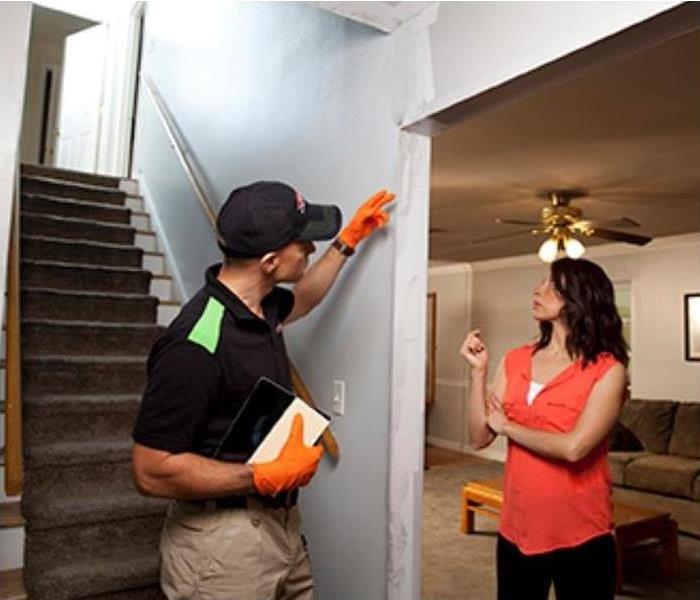 Let SERVPRO of Kingston/New Paltz help make your fire damage "Like it never even happened."
Let SERVPRO of Kingston/New Paltz help make your fire damage "Like it never even happened."
What to do until help arrives, after you've had a fire.
After any fire damage situation, your primary focus should be safety first:
- Is it safe to stay in the house?
- Electrical and "slip and fall" hazards are some of the most prevalent concerns.
- Only do activities that are safe for you to perform.
- Wet materials can be VERY heavy. Be careful!
Have Smoke or Fire Damage? Call 845-255-4334
What To Do After A Fire
- Limit movement in the home to prevent soot particles from being embedded into upholstery and carpets.
- Keep hands clean so as not to further soil upholstery, walls and woodwork.
- Place clean towels or old linens on rugs, upholstery and carpet traffic areas.
- If electricity is off, empty freezer and refrigerator and prop doors open.
- Clean and protect chrome with light coating of petroleum jelly or oil.
- Wash houseplants on both sides of leaves.
- Change HVAC filter.
- Tape double layers of cheesecloth over air registers.
What NOT To Do After A Fire
- Don't attempt to wash any walls or painted surfaces or shampoo carpet or upholstery without contacting us.
- Don't attempt to clean any electrical appliances that may have been close to fire, heat or water without consulting an authorized repair service.
- Don't use any canned or packaged food or beverages that may have been stored near the fire, heat or water.
- Don't turn on ceiling fixtures if ceiling is wet. The wiring may be damaged.
- Don't send garments to an ordinary dry cleaner. Improper cleaning may set smoke odor.
We're available 24/7 to provide emergency fire services, board-up services & reconstruction services to help make your damage "Like it never even happened."
Ulster County Fire & Soot Cleanup
3/20/2017 (Permalink)
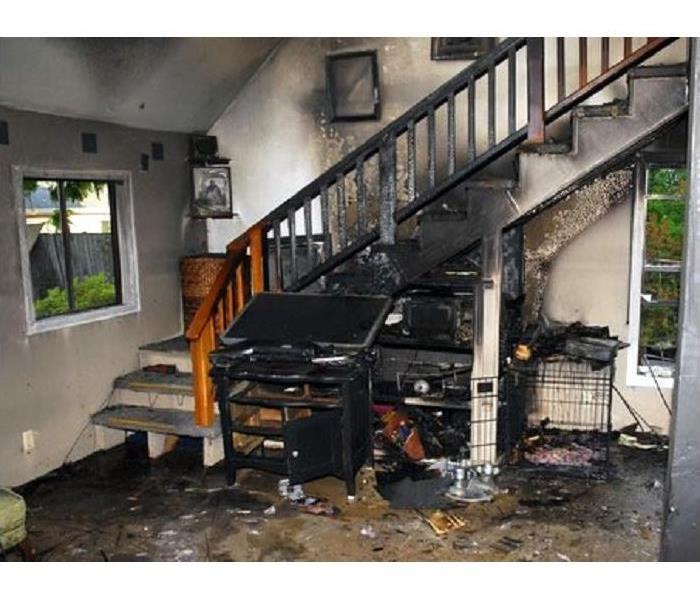 What type of fire smoke is pictured above?
What type of fire smoke is pictured above?
Smoke and soot is very invasive and can penetrate various cavities within your home, causing hidden damage and odor. Our smoke damage expertise and experience allows us to inspect and accurately assess the extent of the damage to develop a comprehensive plan of action.
Smoke and soot facts:
- Hot smoke migrates to cooler areas and upper levels of a structure.
- Smoke flows around plumbing systems, seeping through the holes used by pipes to go from floor to floor.
- The type of smoke may greatly affect the restoration process.
Different Types of Smoke
There are two different types of smoke–wet and dry. As a result, there are different types of soot residue after a fire. Before restoration begins, SERVPRO of Kingston/New Paltz will test the soot to determine which type of smoke damage occurred. The cleaning procedures will then be based on the information identified during pretesting. Here is some additional information:
Wet Smoke – Plastic and Rubber
- Low heat, smoldering, pungent odor, sticky, smeary. Smoke webs are more difficult to clean.
Dry Smoke – Paper and Wood
- Fast burning, high temperatures, heat rises therefore smoke rises.
Protein Fire Residue – Produced by evaporation of material rather than from a fire
- Virtually invisible, discolors paints and varnishes, extreme pungent odor.
Our Fire Damage Restoration Services
Since each smoke and fire damage situation is a little different, each one requires a unique solution tailored for the specific conditions. We have the equipment, expertise, and experience to restore your fire and smoke damage. We will also treat your family with empathy and respect and your property with care.
Have Questions about Fire, Smoke, or Soot Damage?
Call Us Today – 845-831-3600 or 845-255-4334
How to Properly Use Your Fire Extinguisher
3/6/2017 (Permalink)
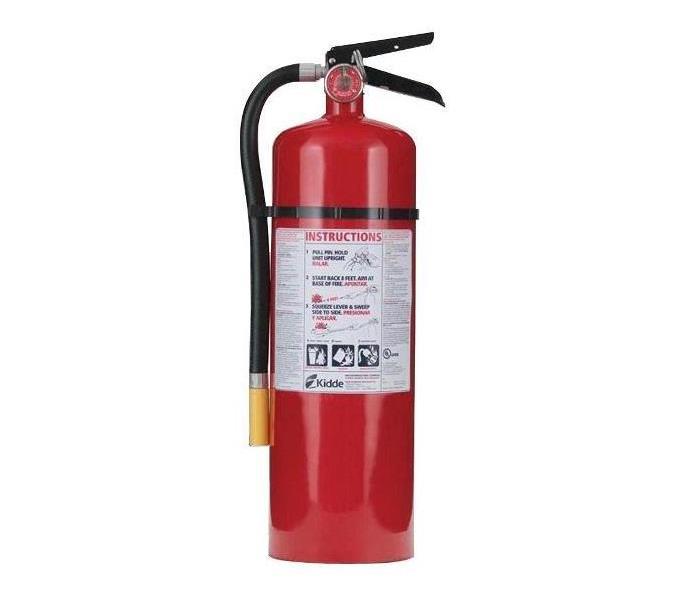 Fire Extinguishers can save lives!
Fire Extinguishers can save lives!
Why you should consider a fire extinguisher for your Ulster County home.
Fire extinguishers can save your life! They can put out a fire before emergency personnel arrive or they can help you exit your home safely.
What type do you get?
All household fire extinguishers have 3 classifications: A, B or C. Some models have a combination of all three extinguishers in one.
- "A" is for ordinary combustibles like trash, wood and paper
- "B" is for liquids & grease (more stove top fires)
- "C" is for electrical equipment
According to the National Fire Protection Association, each floor of your home should have an extinguisher.
How do you use a fire extinguisher?
To use the extinguisher properly, you want to use the PASS method:
- Pull the pin. Hold the nozzle pointing away from you and release the locking mechanism.
- Aim low. Point the extinguisher at the base of the fire instead of at the flames themselves. Standing at least 6 feet away from the fire is important!
- Squeeze the lever slowly and evenly while keeping the extinguisher upright.
- Sweep the nozzle from side-to-side until the extinguisher runs dry.
Read the instructions on the fire extinguisher and become familiar with them before a fire breaks out. Remember, extinguishers do have limitations so make sure you have the correct extinguisher for your home.
Whenever you use an extinguisher, whether you ran it dry or used it briefly, it's important to replace it or refill it right away. This is also the rule for any gauge that goes down to the red zone over time.
Even though you take precautions against fire damages, they can still sometimes occur. If you experience a fire damage in your home, don't hesitate to contact SERVPRO of Kingston/New Paltz at 845-255-4334 to help make this disaster "Like it never even happened."
Tips to Prevent Home Fires
1/28/2016 (Permalink)
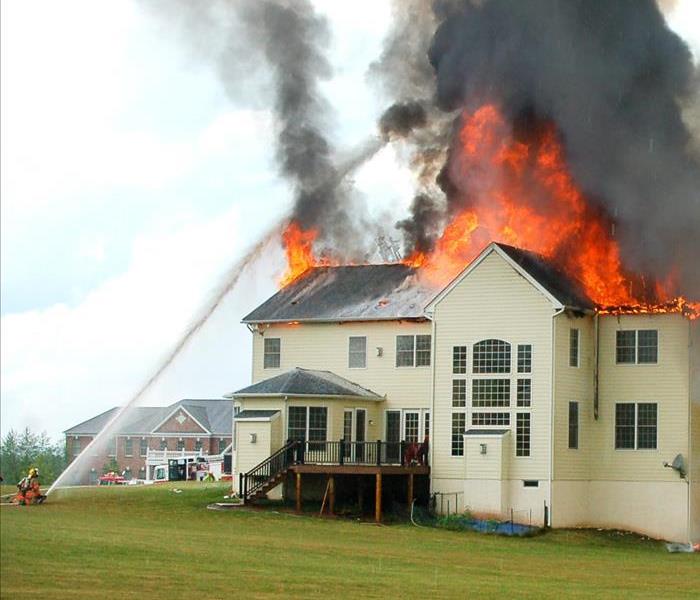 Use these tips to prevent house fires
Use these tips to prevent house fires
According to U.S. News, “Each year, roughly 3,400 people are killed in home fires or by burn injuries, making them the third-most-common cause of accidental deaths at home”. They have provided five tips that can help to prevent home fires.
Fire Threat: Cooking
· Stand by your pan! Don’t walk away while the stove or cooktop is on. This can lead to a fire very quickly.
Fire Threat: Heating
· A space heater needs 3 feet of clear space all around it in all directions, keeping it away from draperies, furniture, bedspreads, people, and pets .
· Chimneys should be inspected and cleaned before each heating season begins.
Fire Threat: Smoking
· Take it outside. There are usually less combustible items outside than there are inside.
Fire Threat: Electrical
· Check all of your electrical cords to ensure that they are in good shape, and replace any that are worn out. In addition, make sure you are not overloading circuits and that one receptacle has one plug.
Fire Threat: Candles
· Consider going to battery-operated candles. They are fake but they are so much safer! It’s easy to forget to put out a candle when leaving a room.
Reference: Mullins (U.S. News) Top 5 Tips to Prevent House Fires.
 Soot and water damage do just as much damage as the fire itself. Call the experienced pros to handle it all if you're dealing with a fire!
Soot and water damage do just as much damage as the fire itself. Call the experienced pros to handle it all if you're dealing with a fire!





 24/7 Emergency Service
24/7 Emergency Service







































